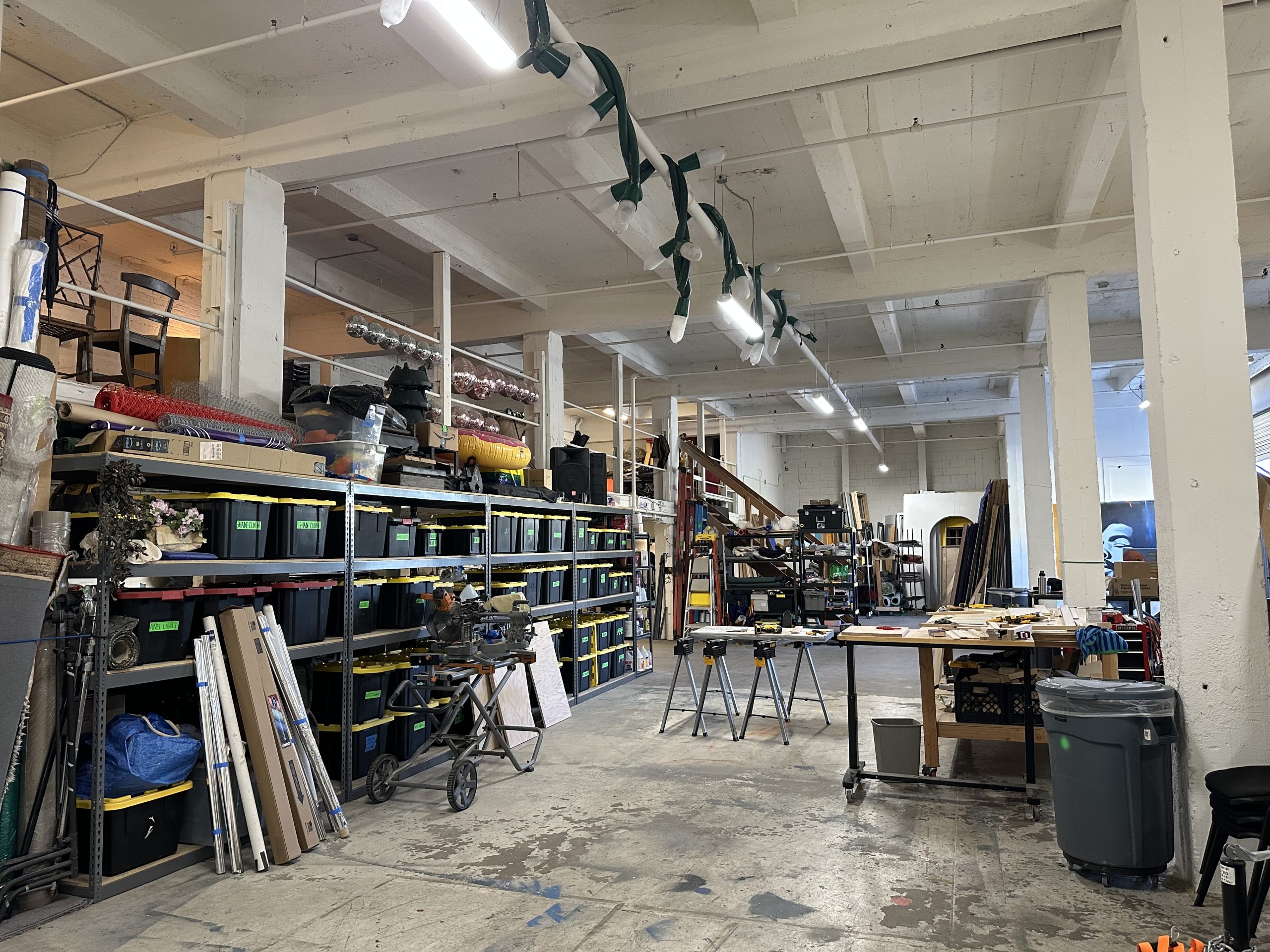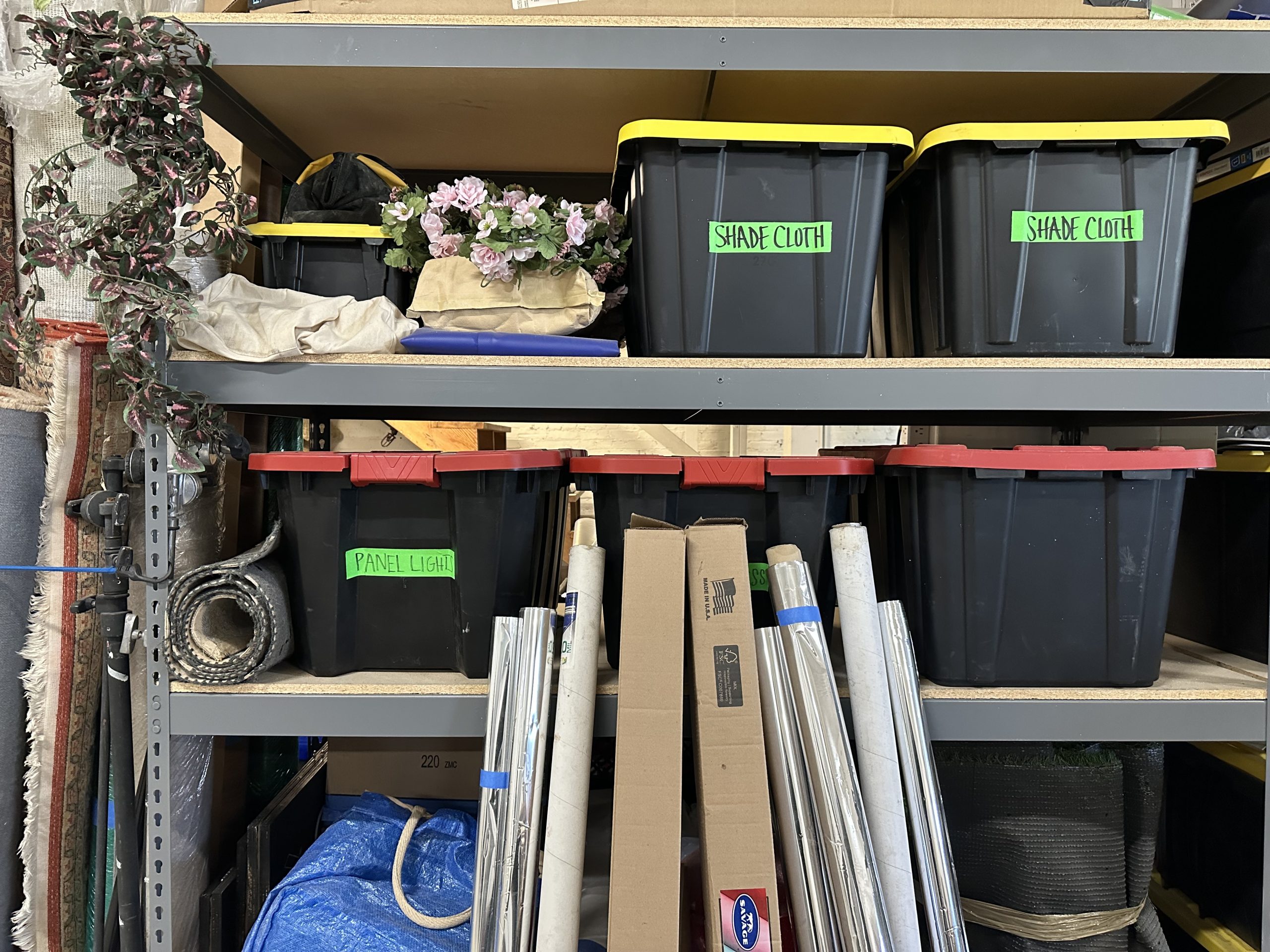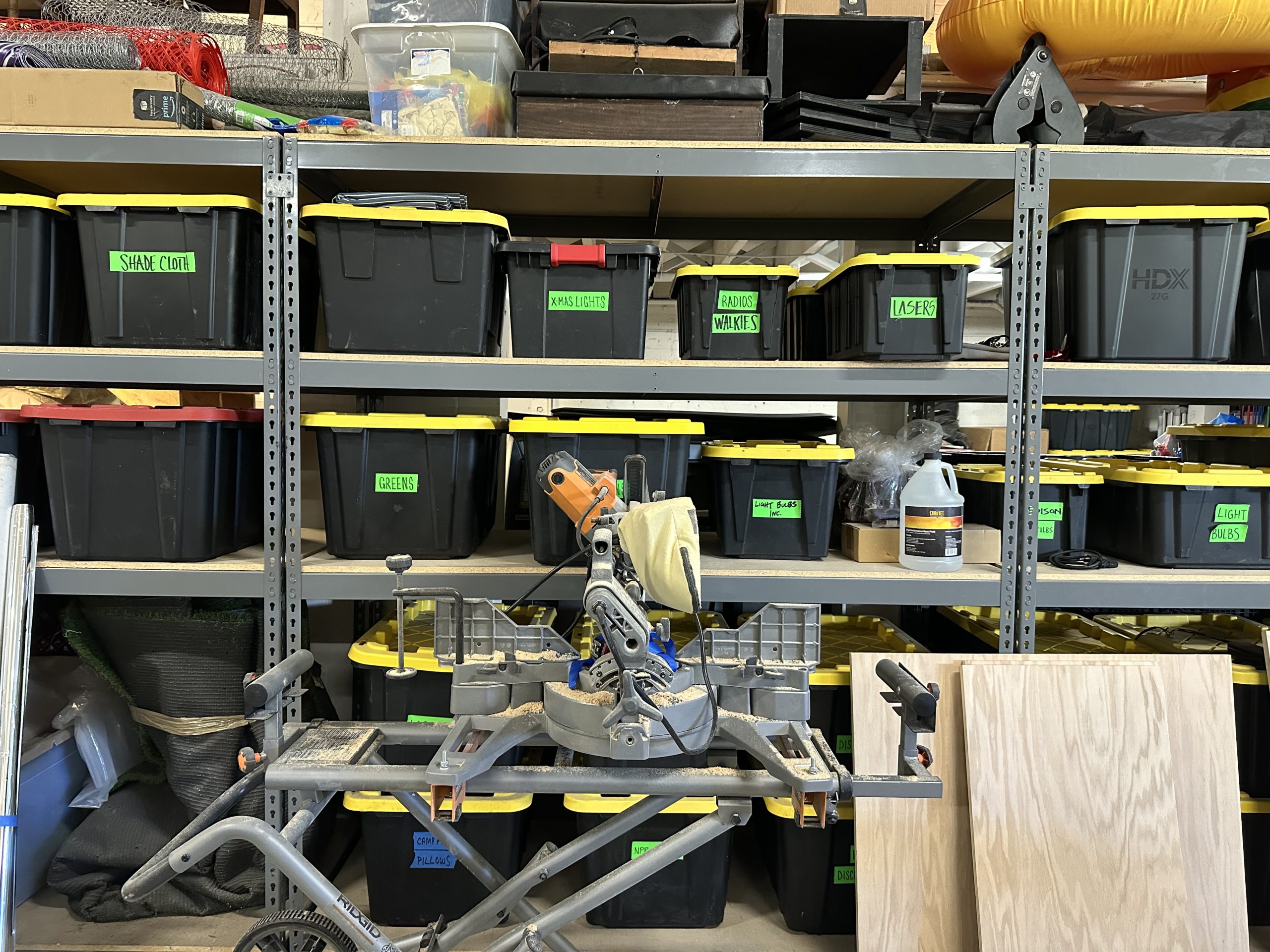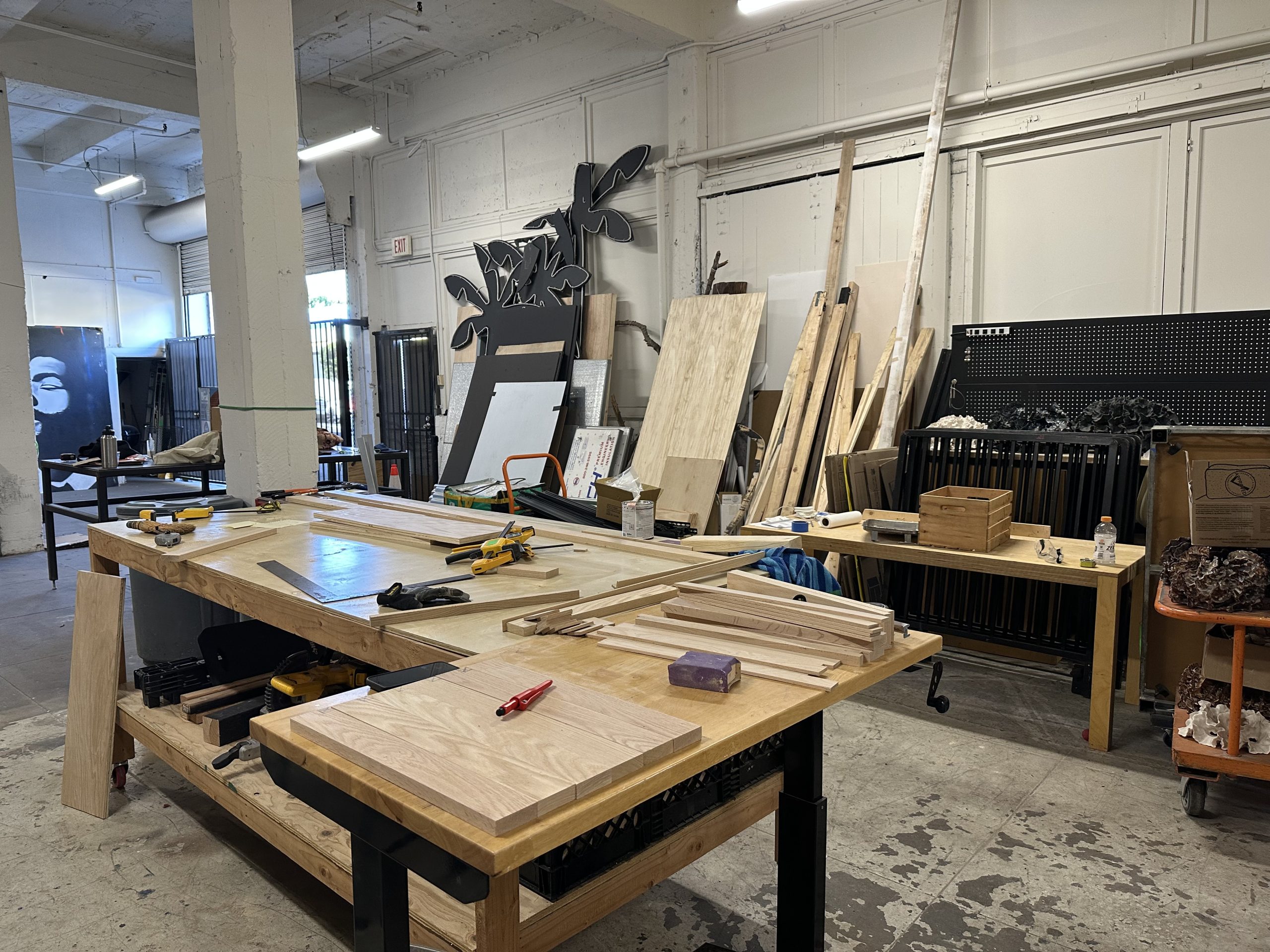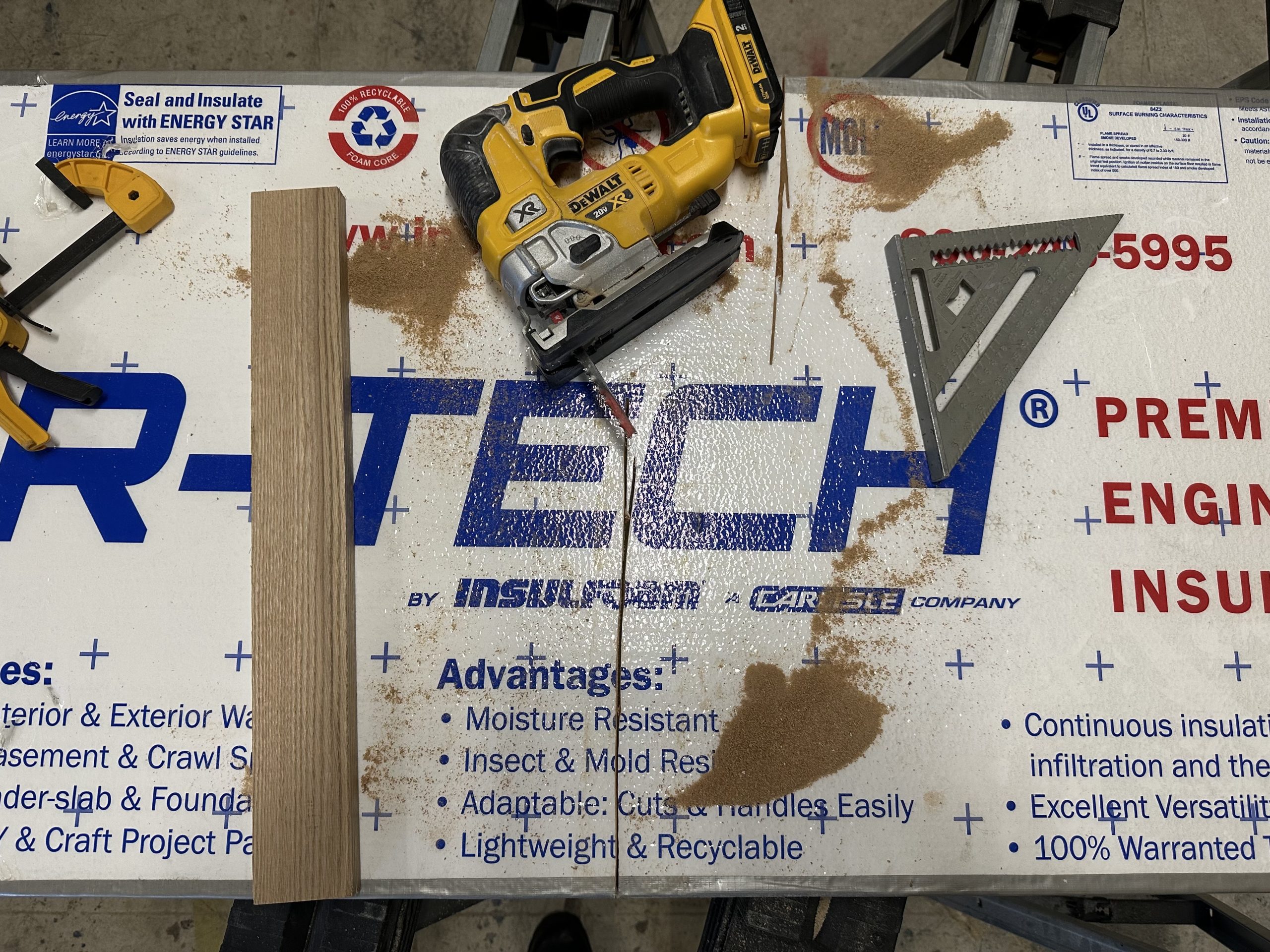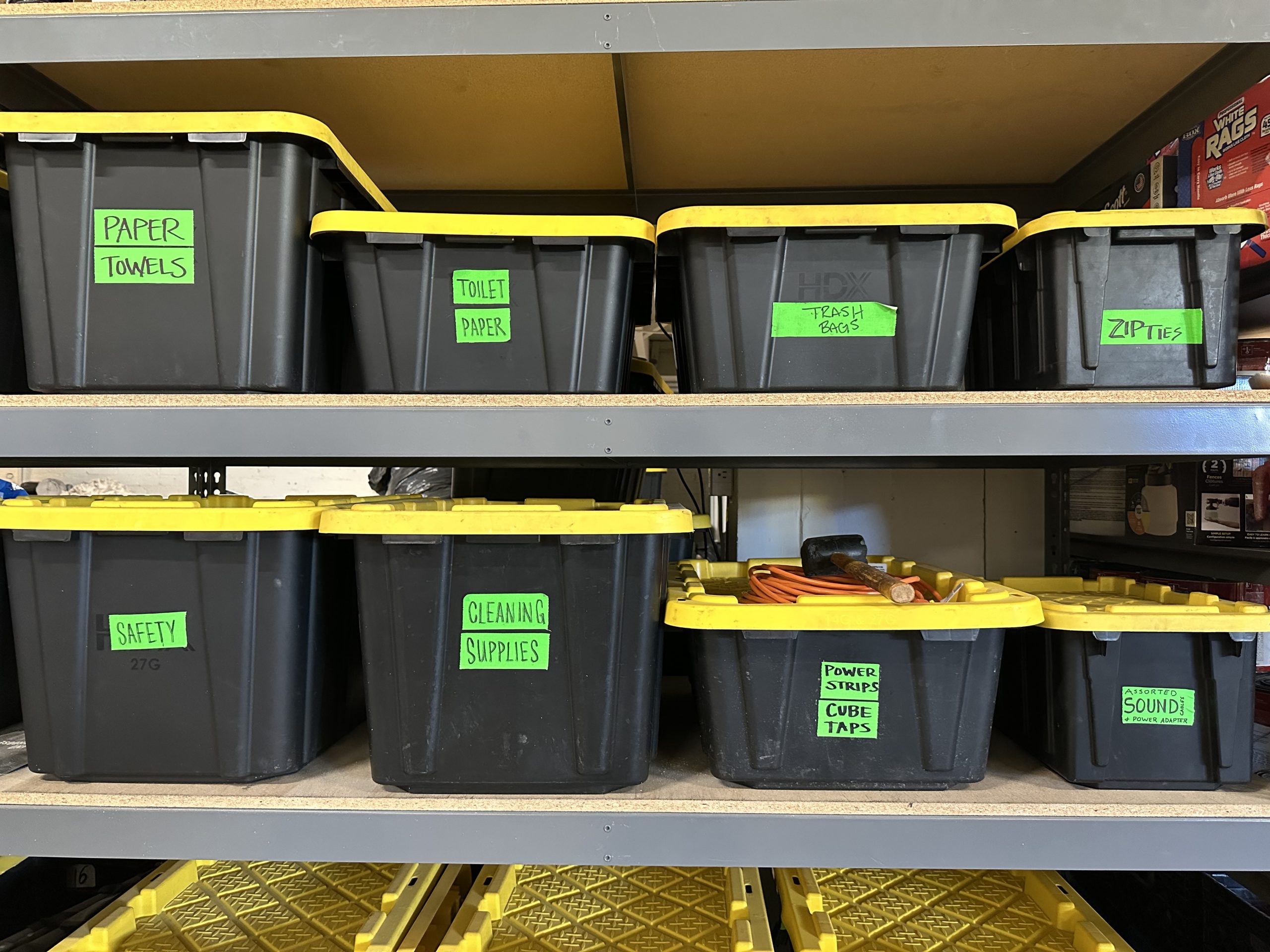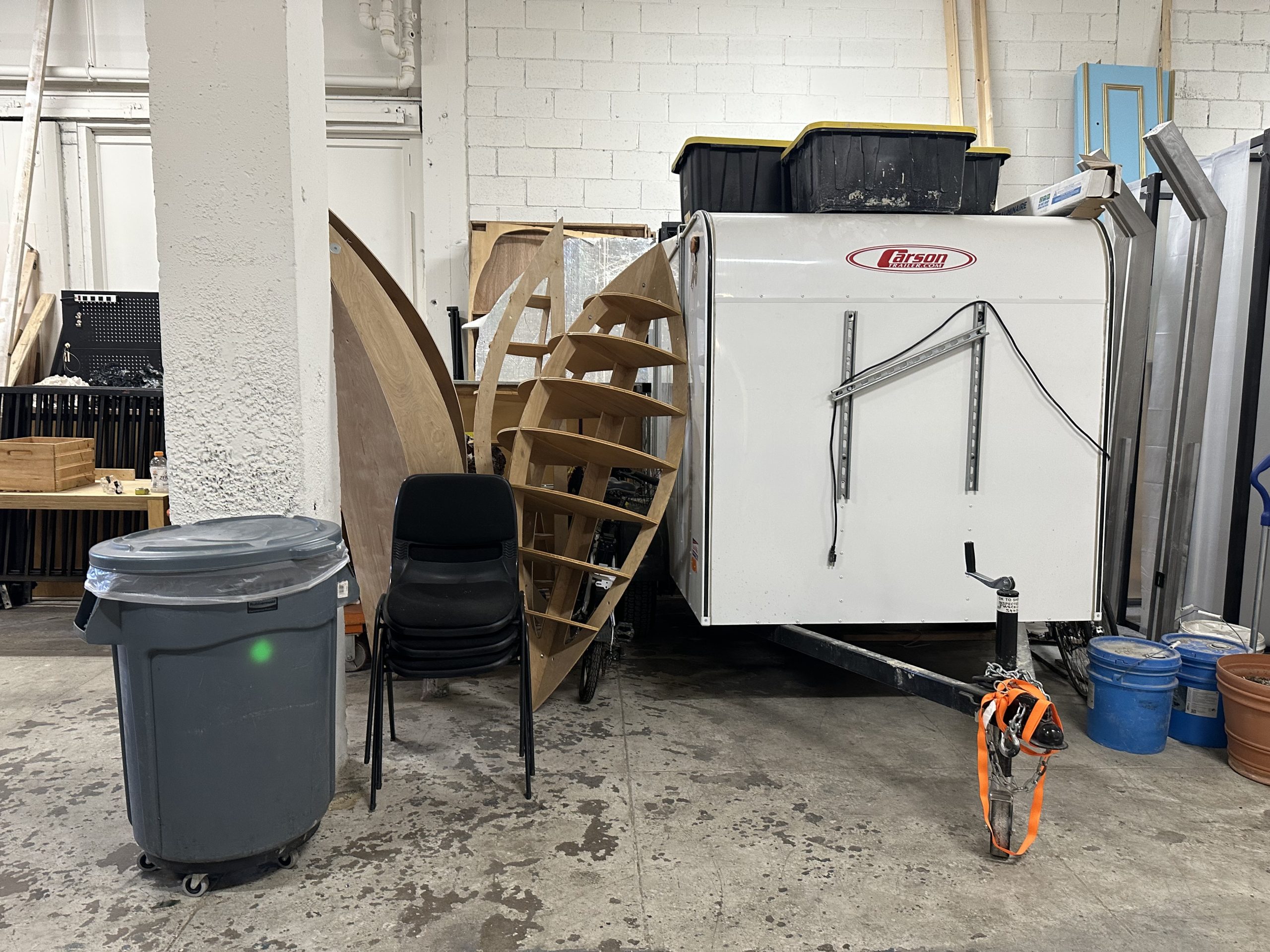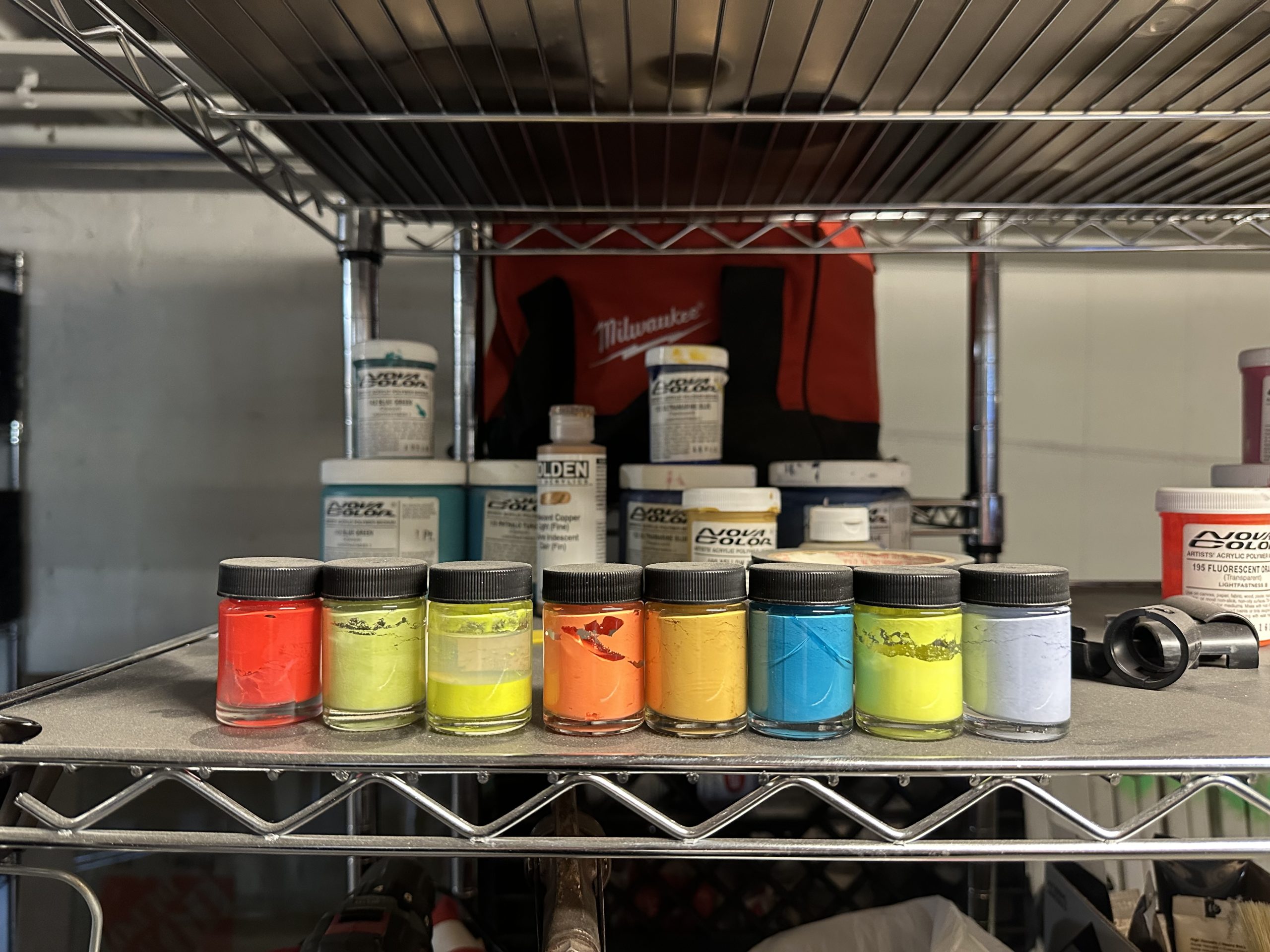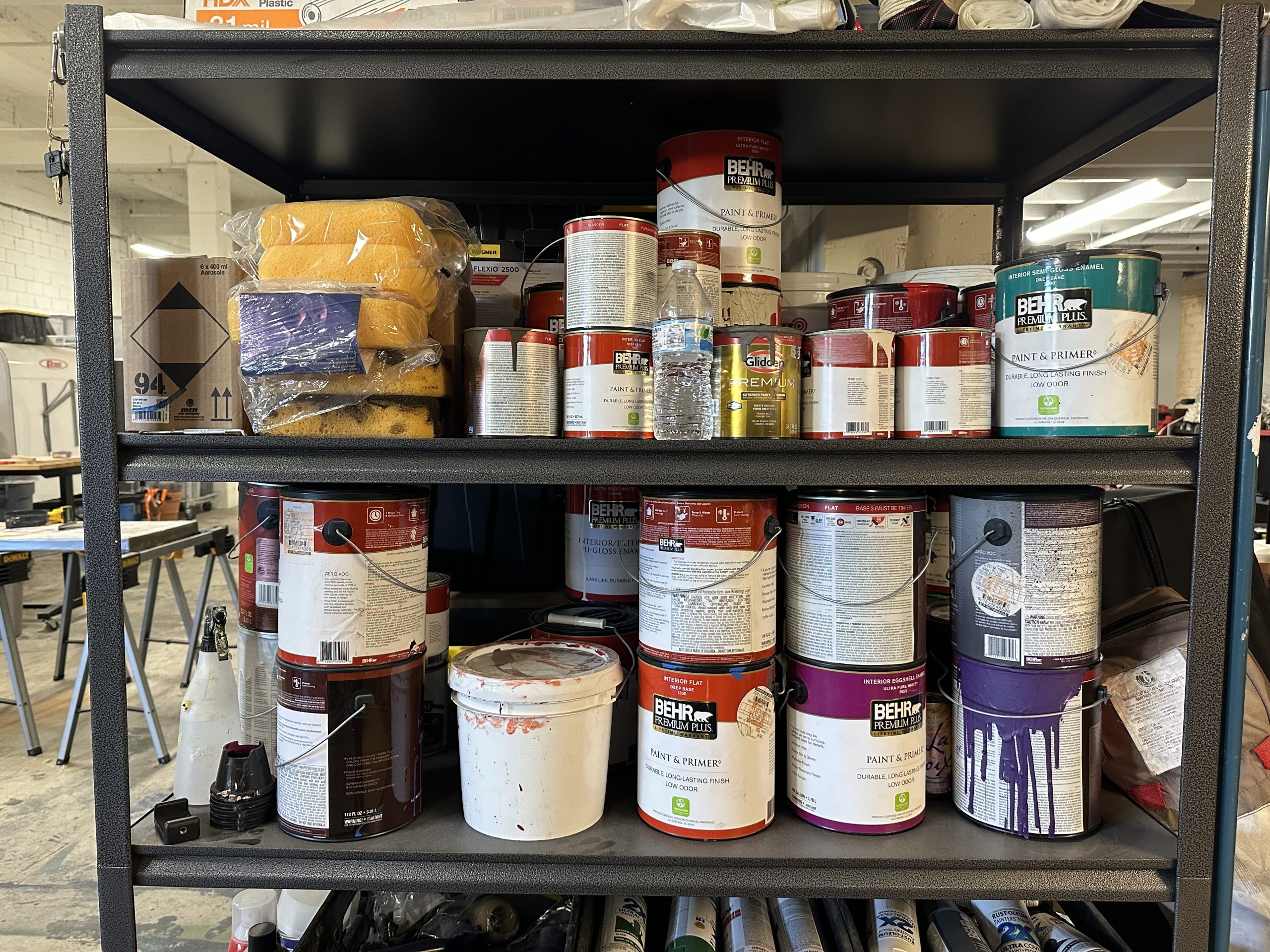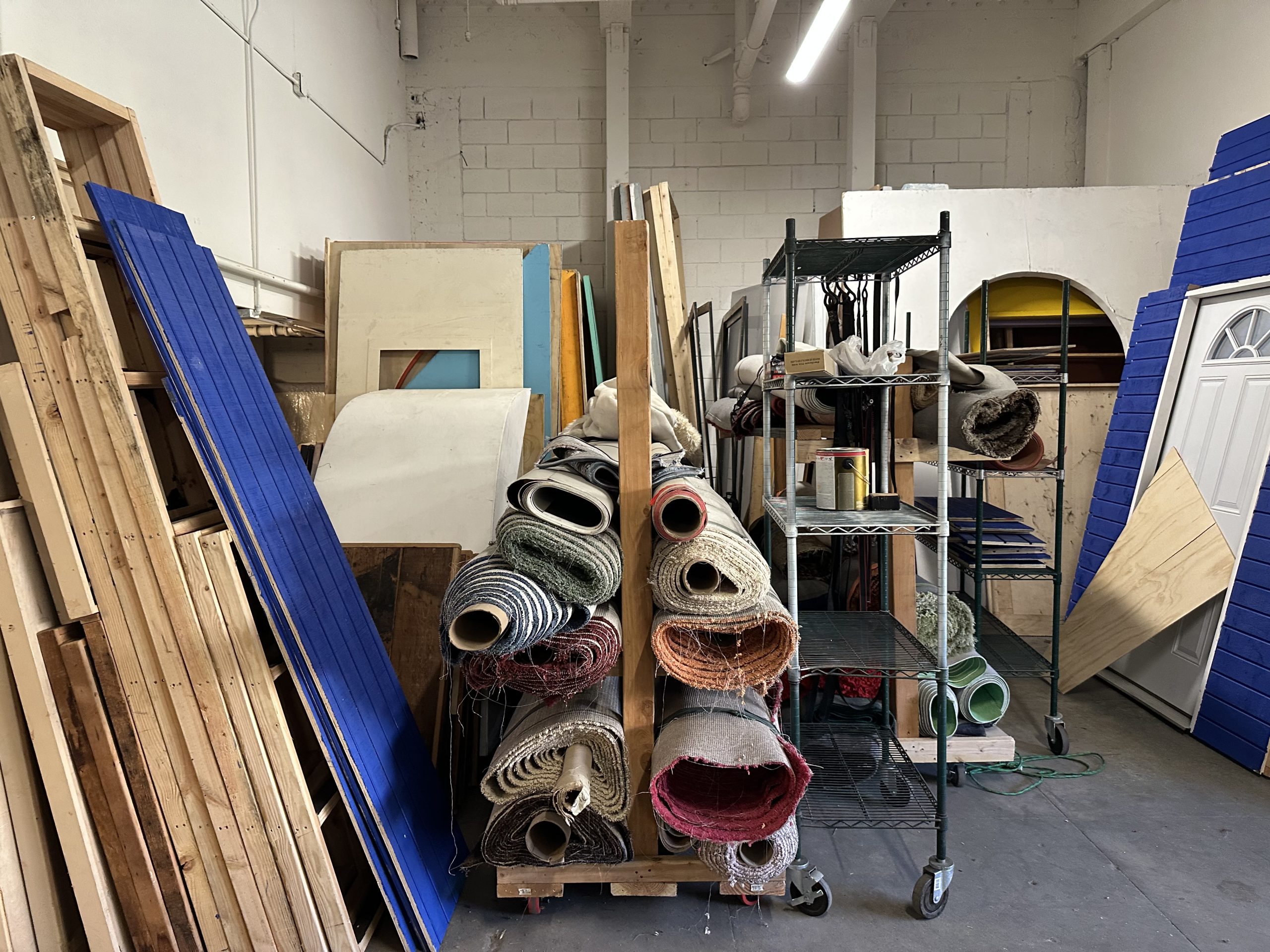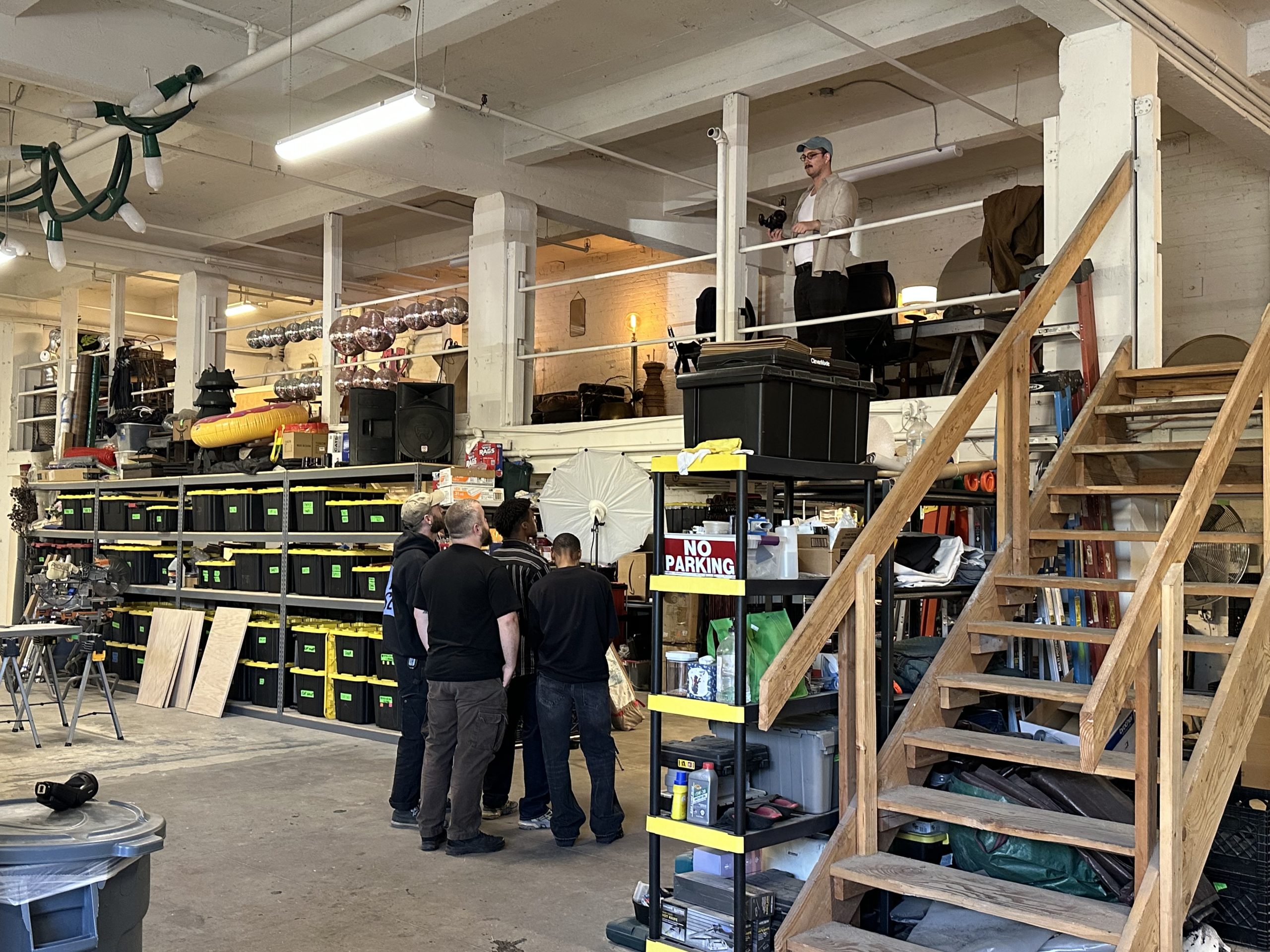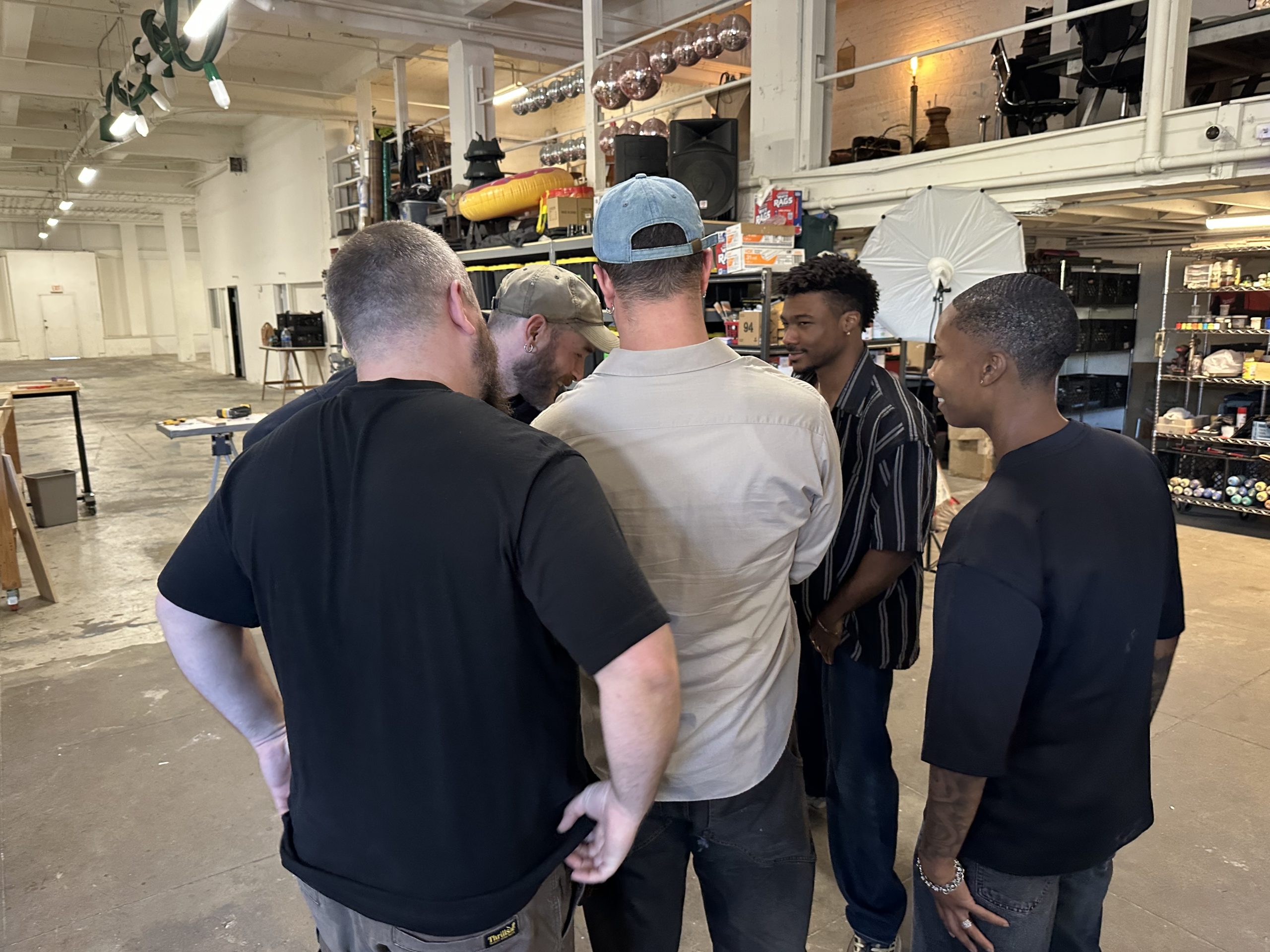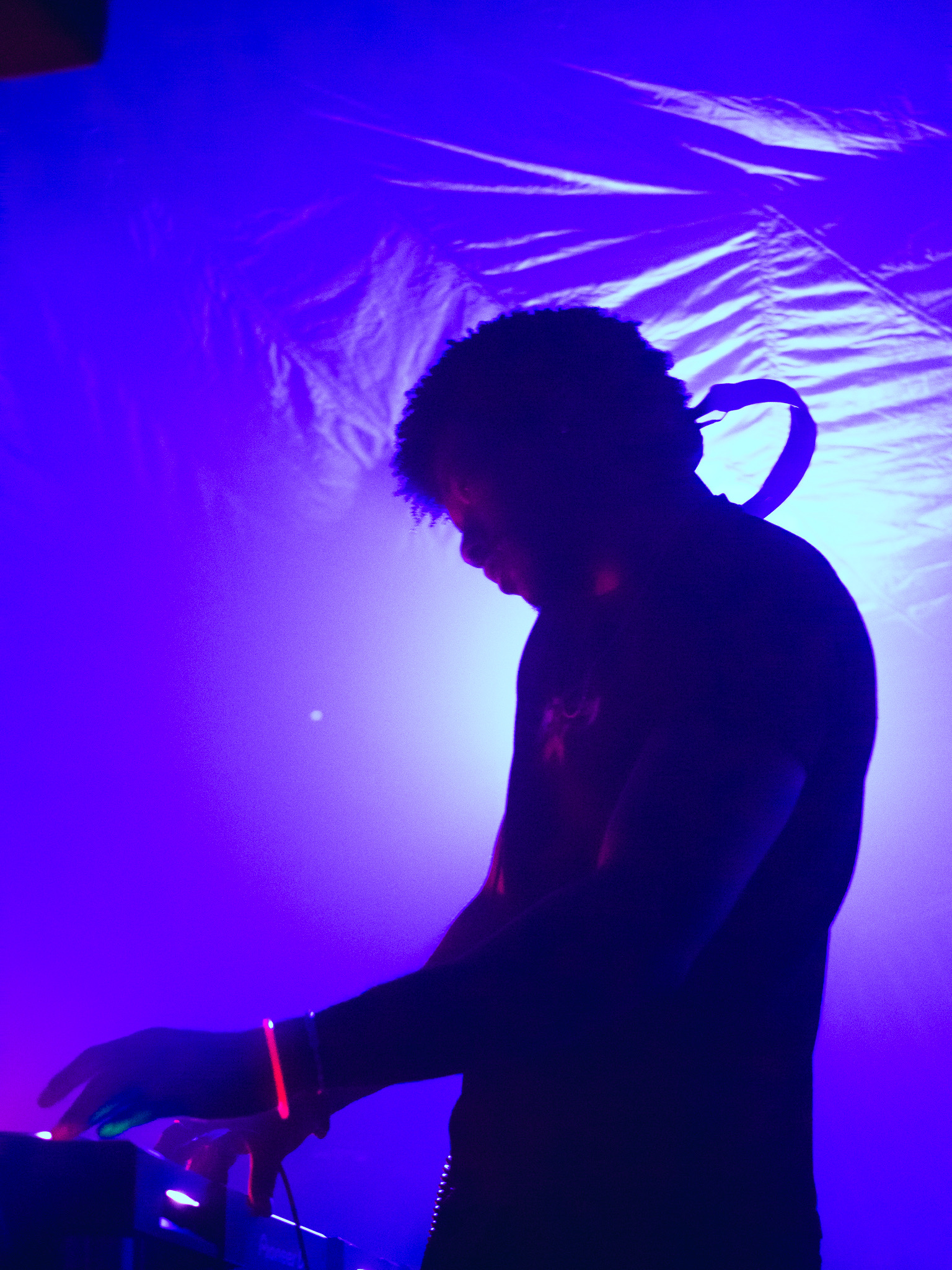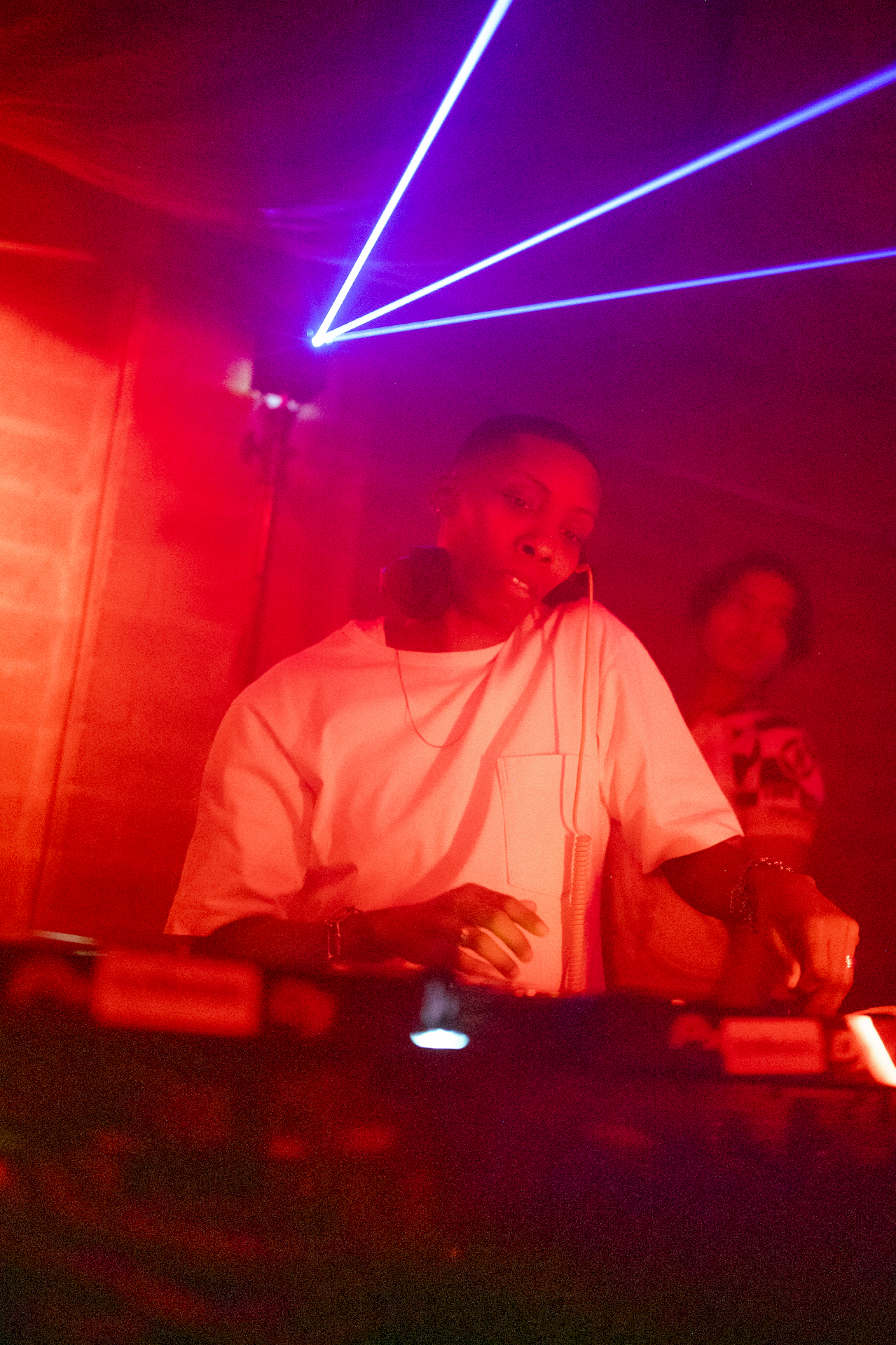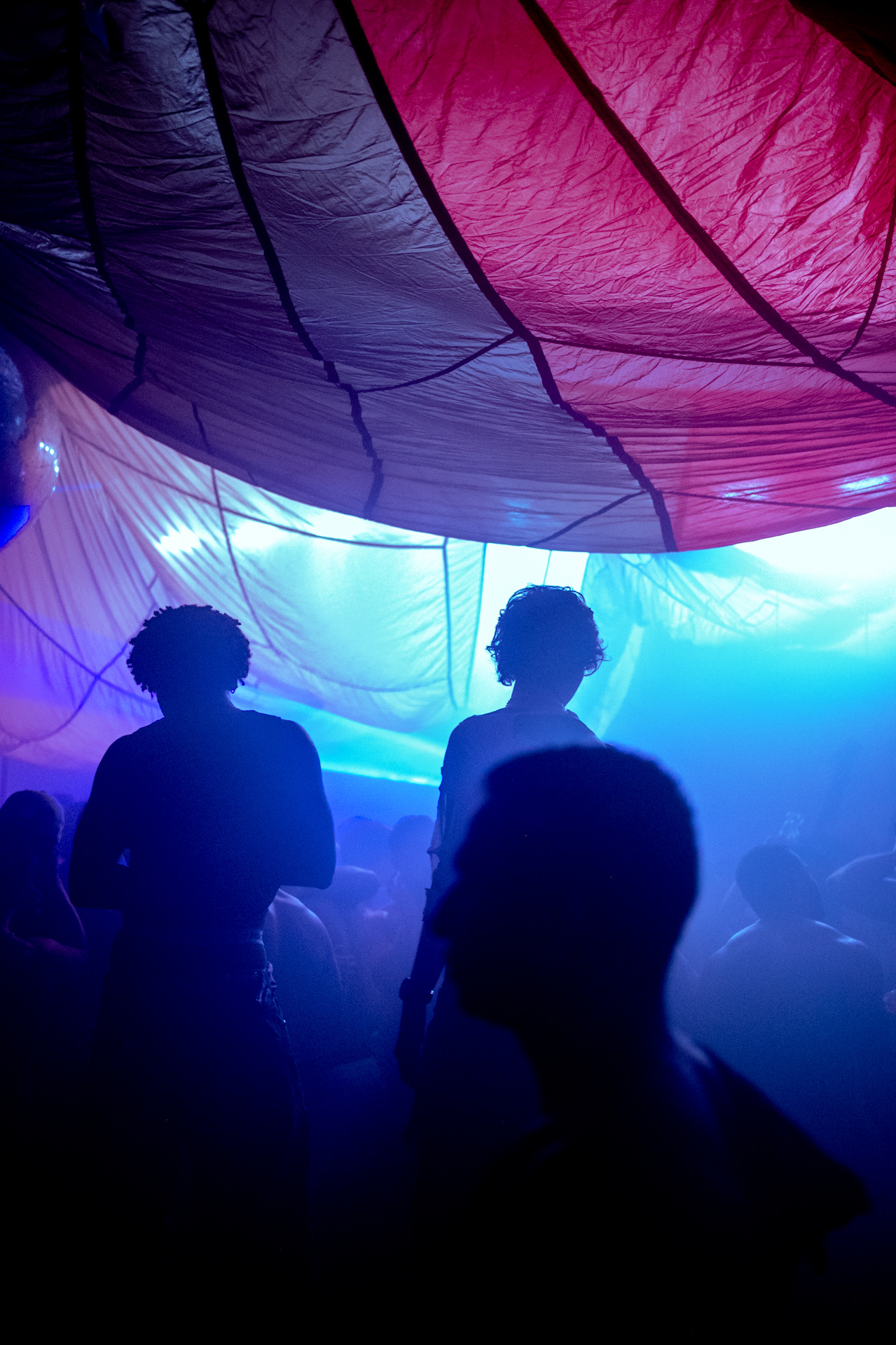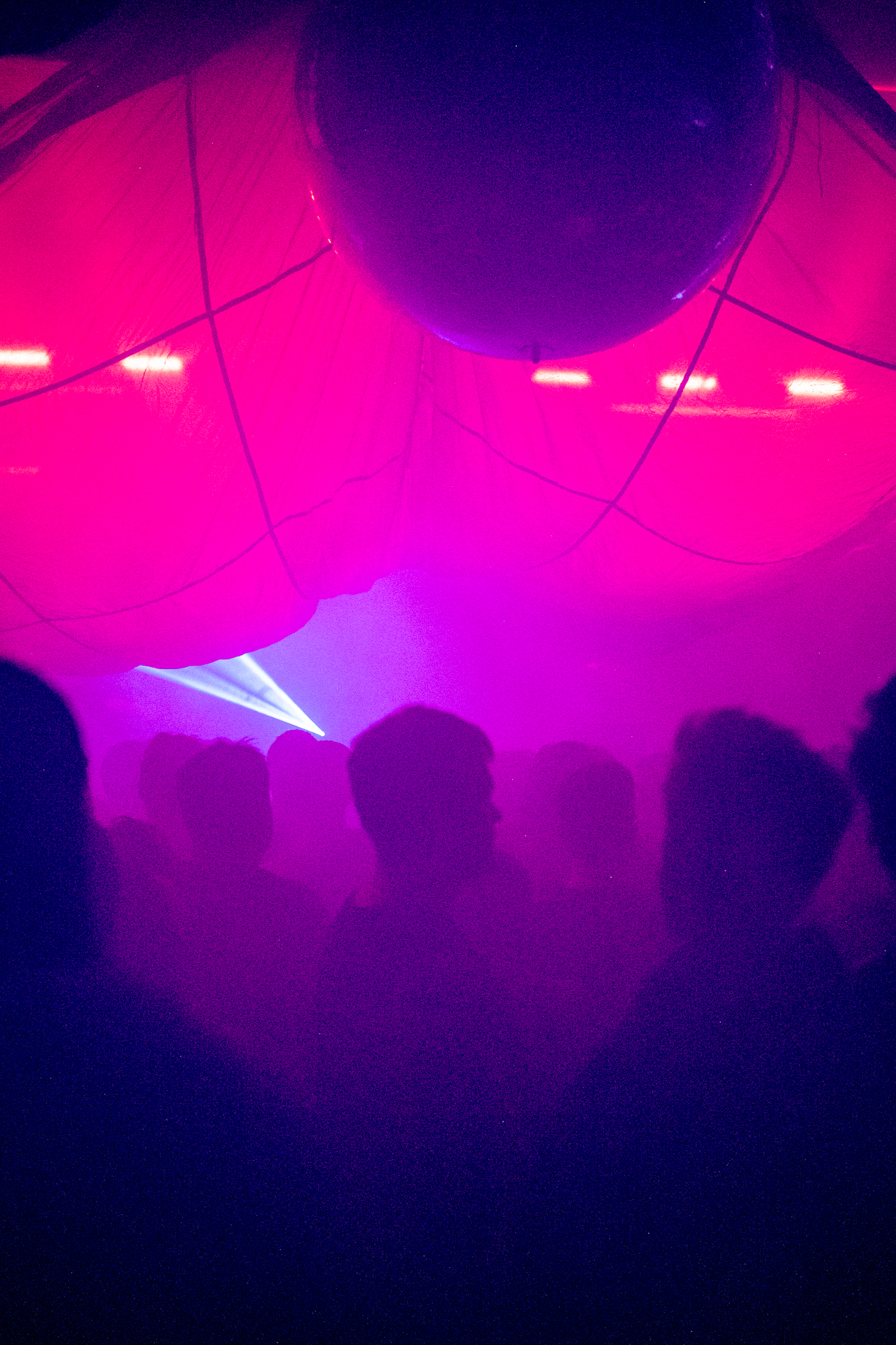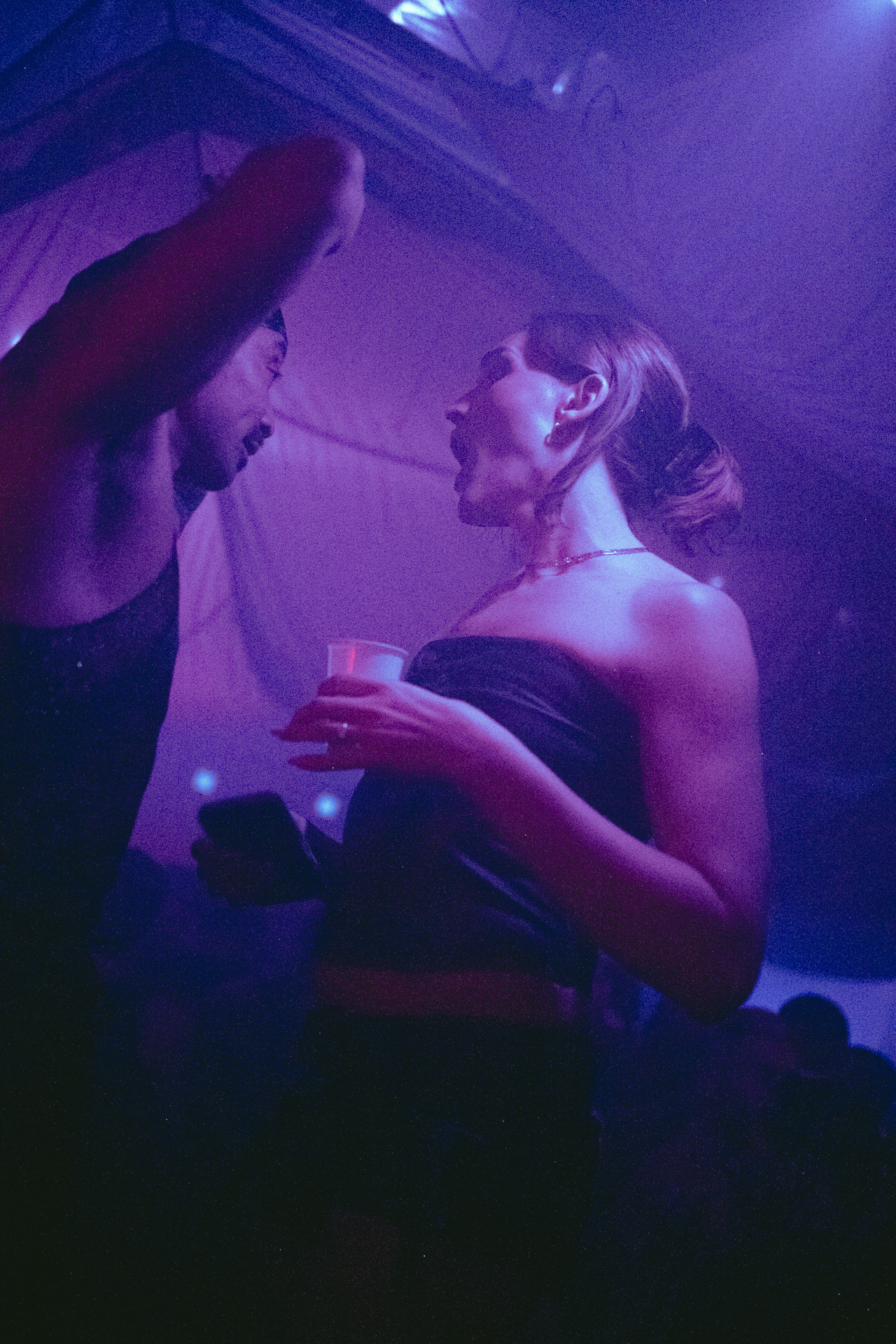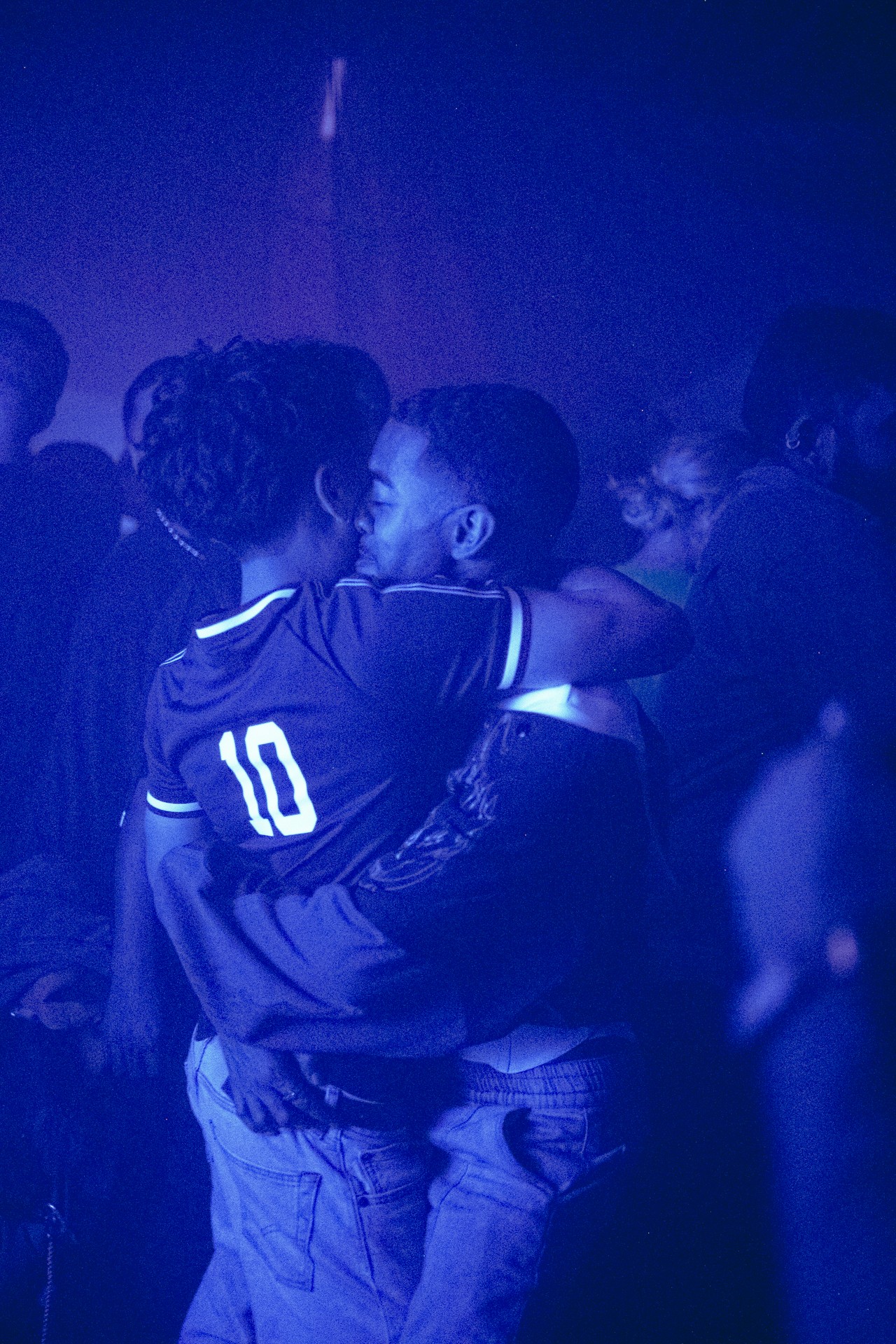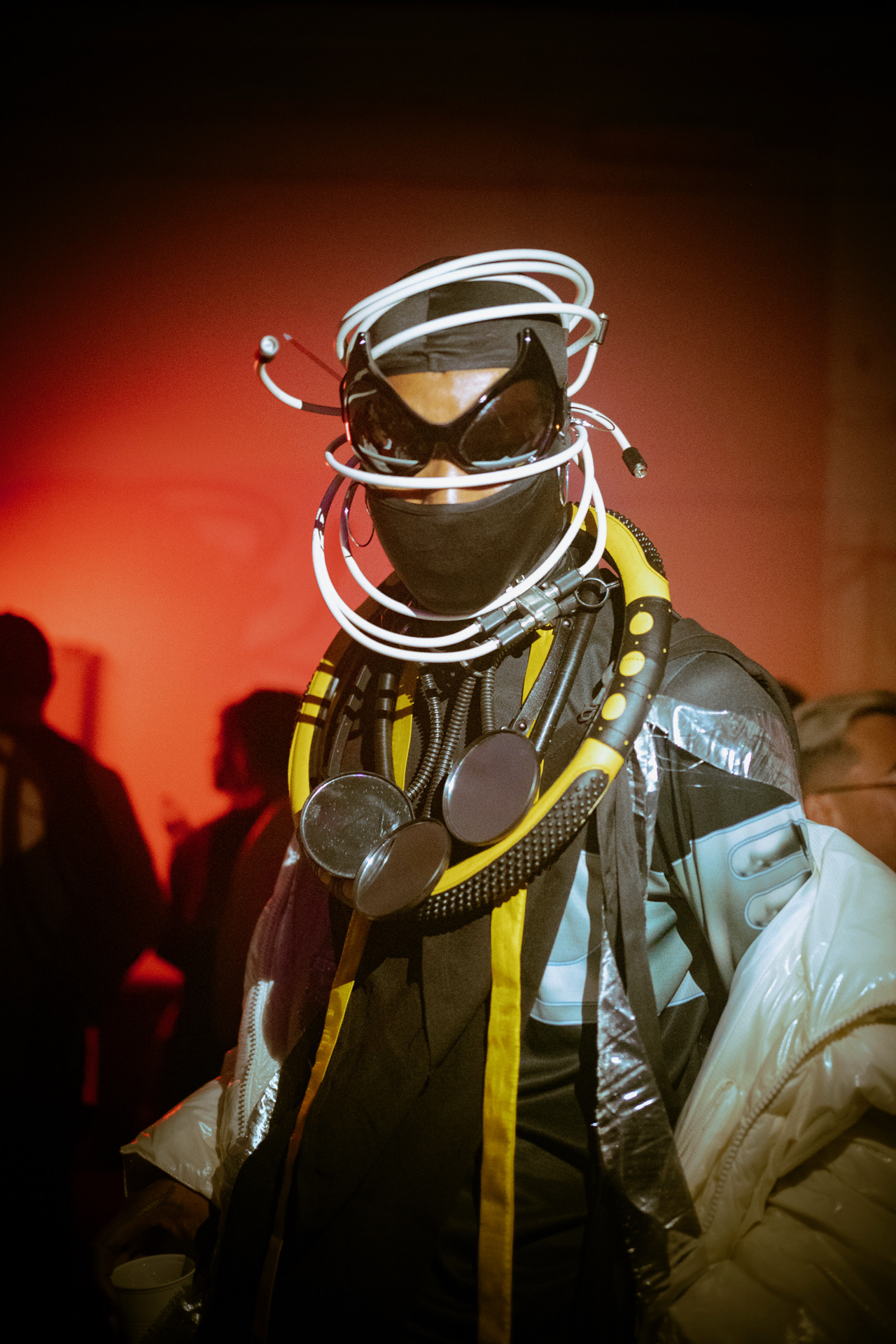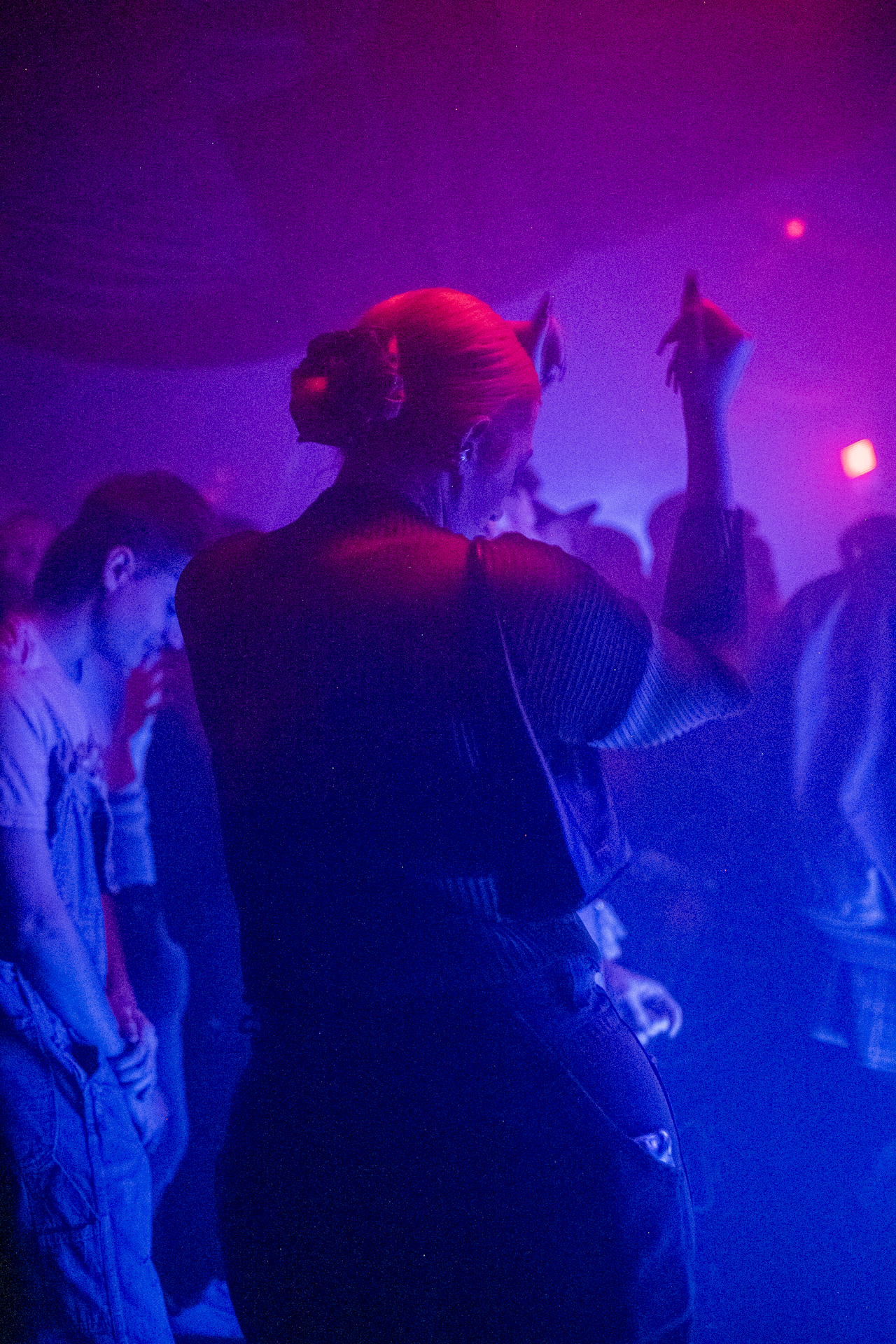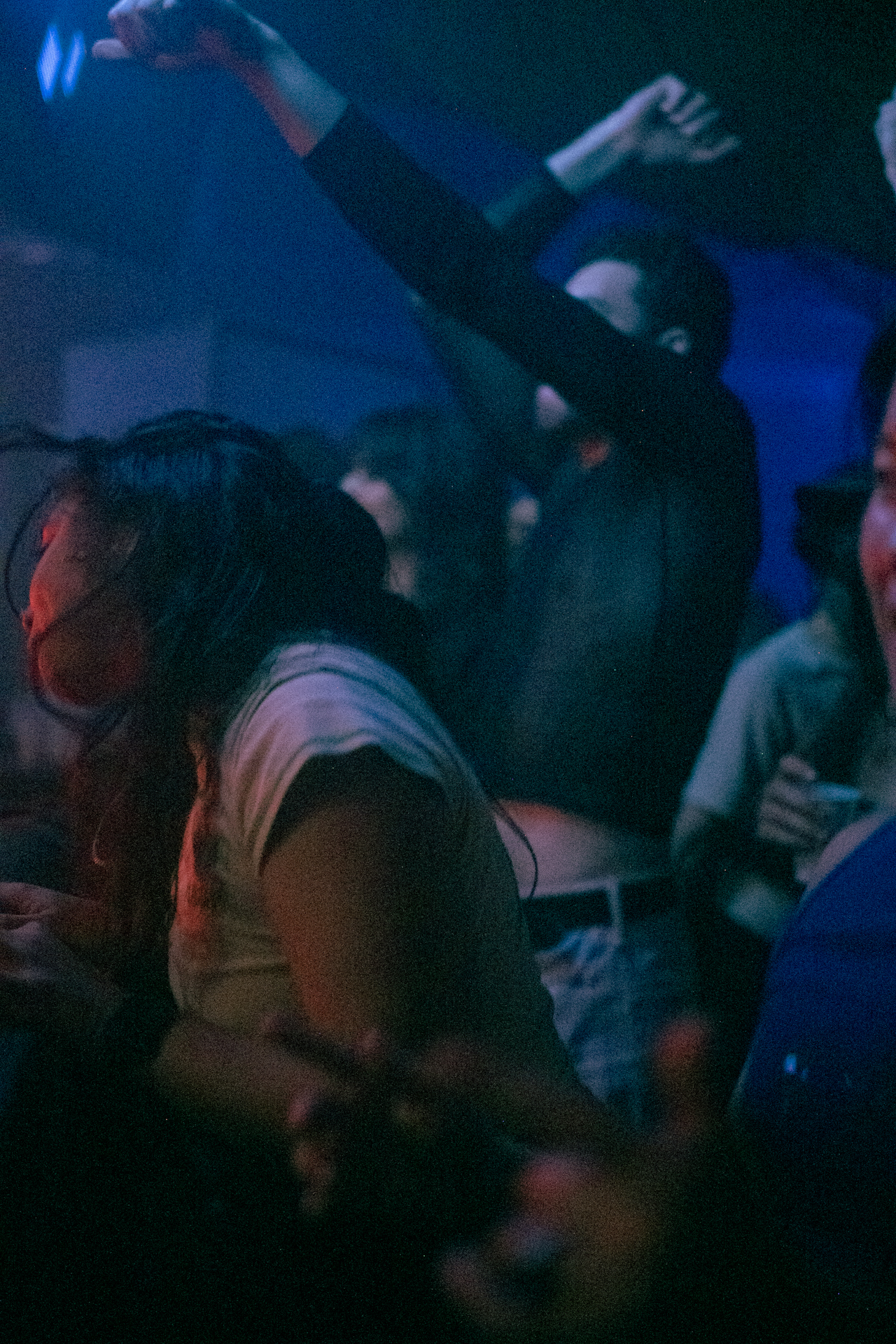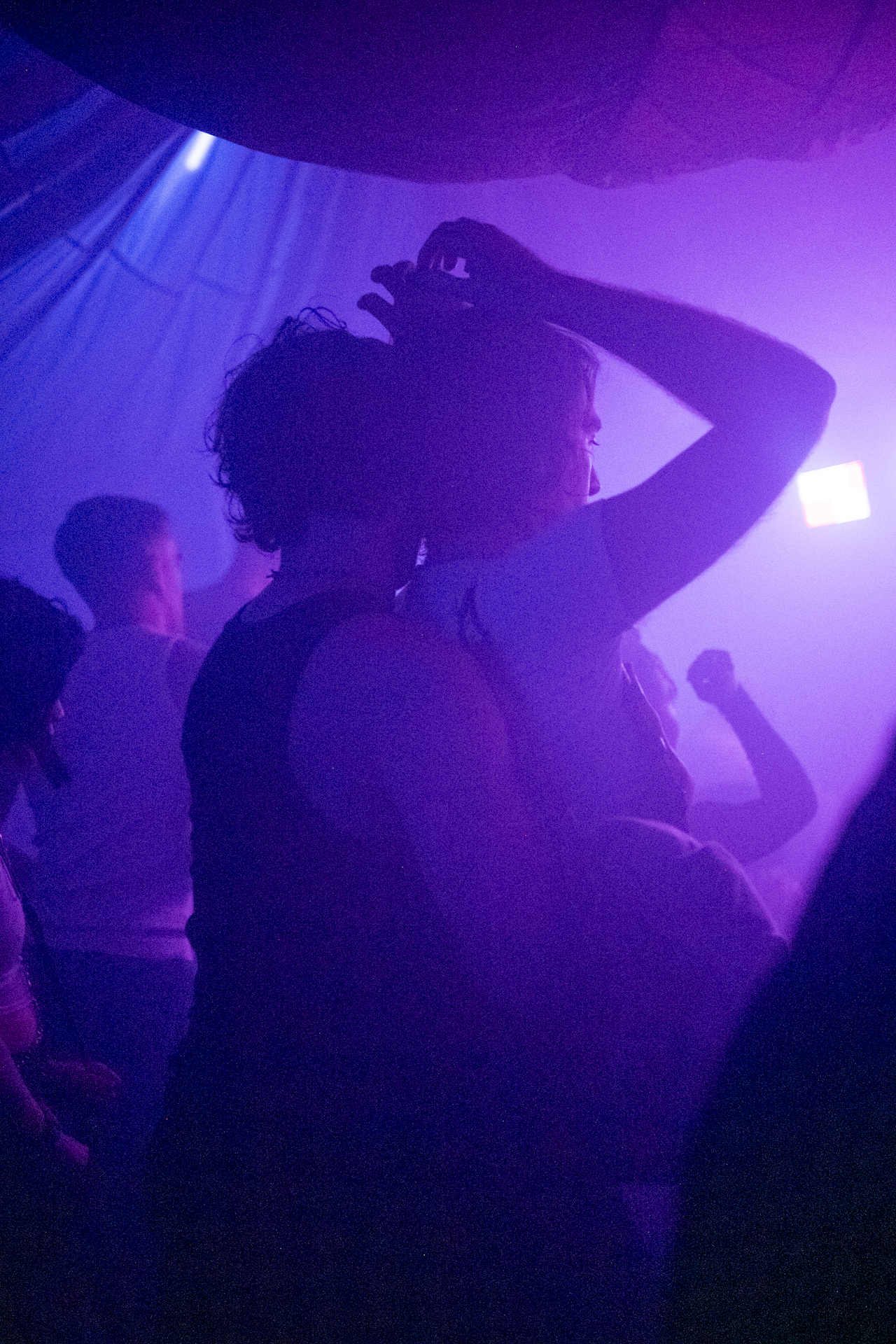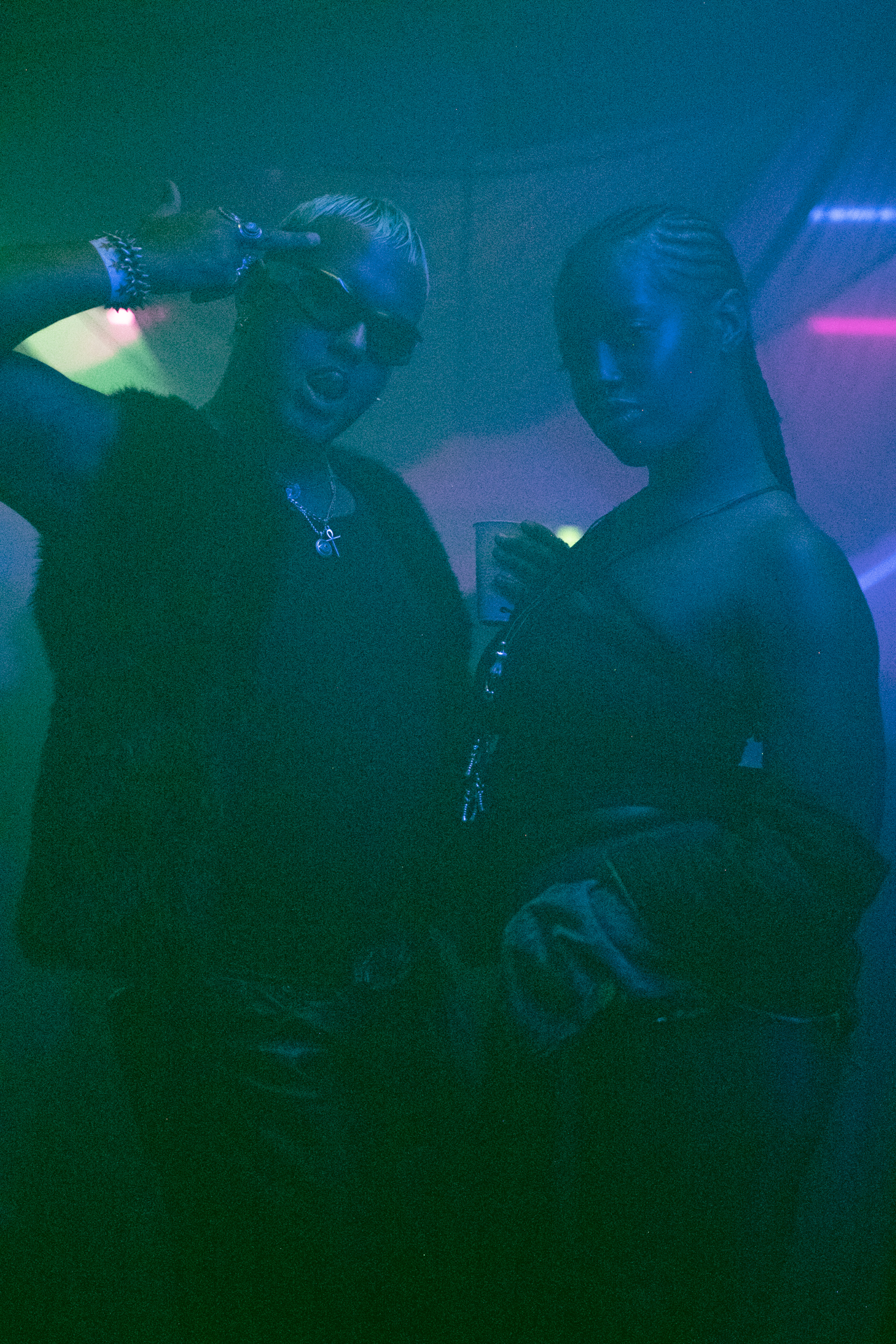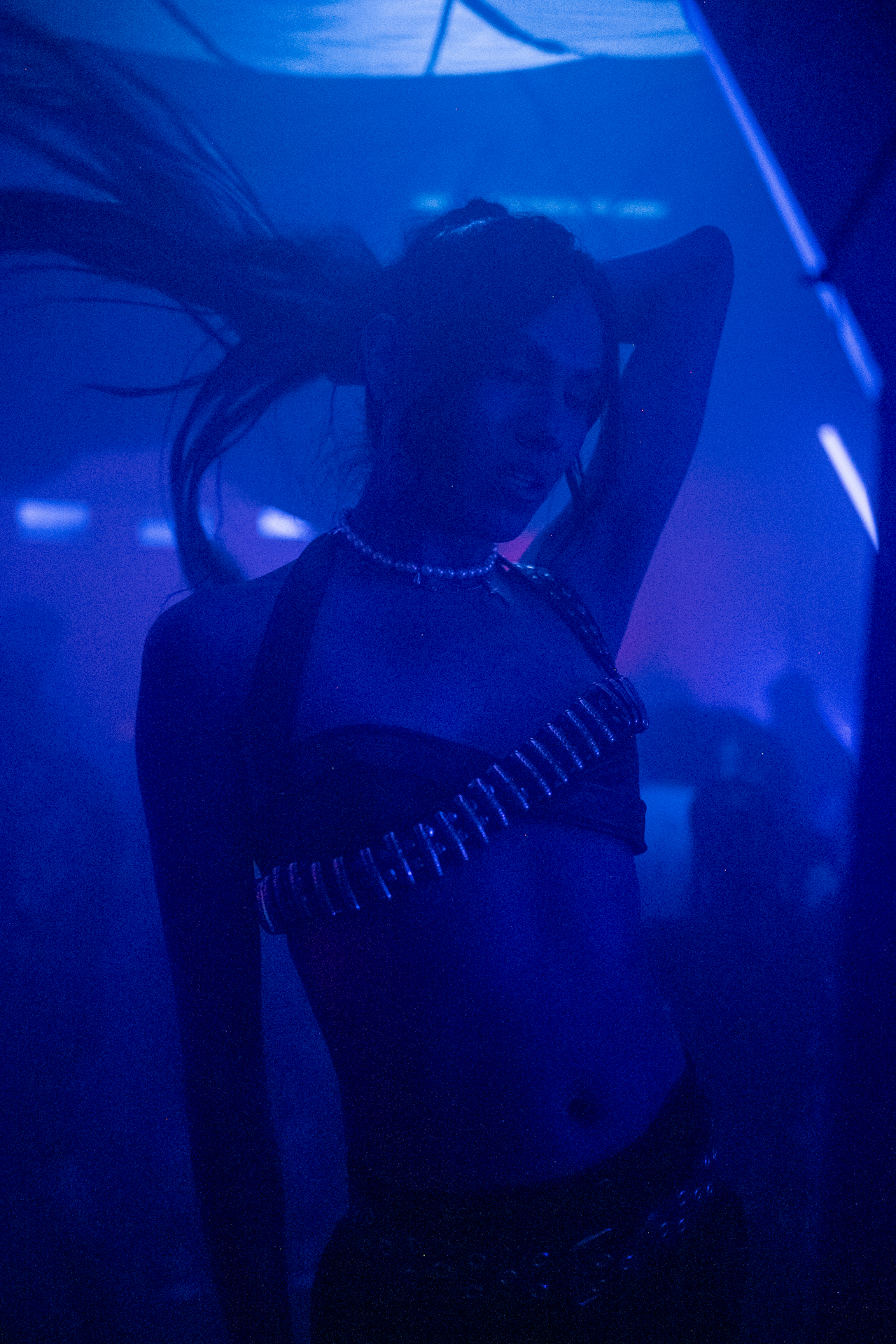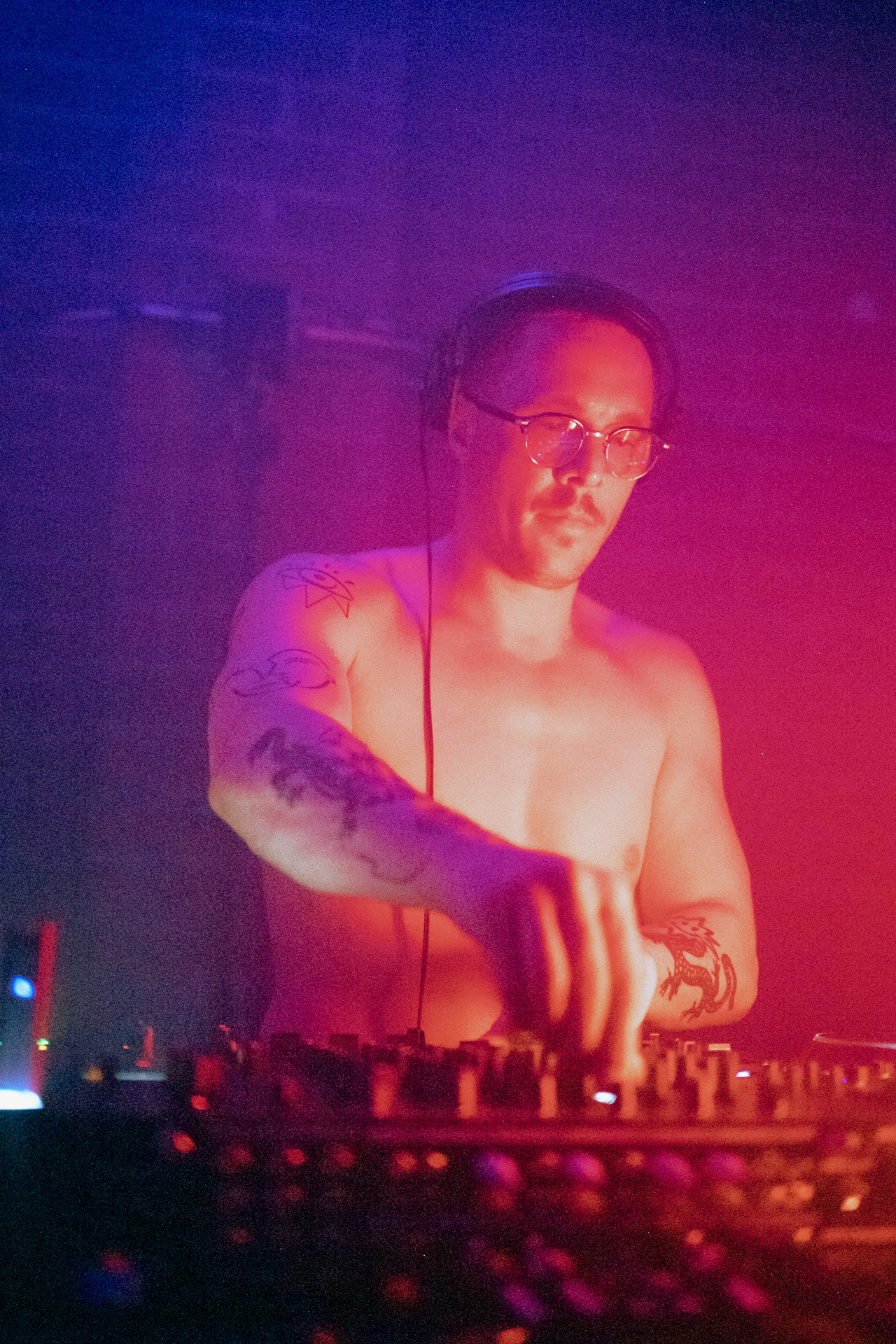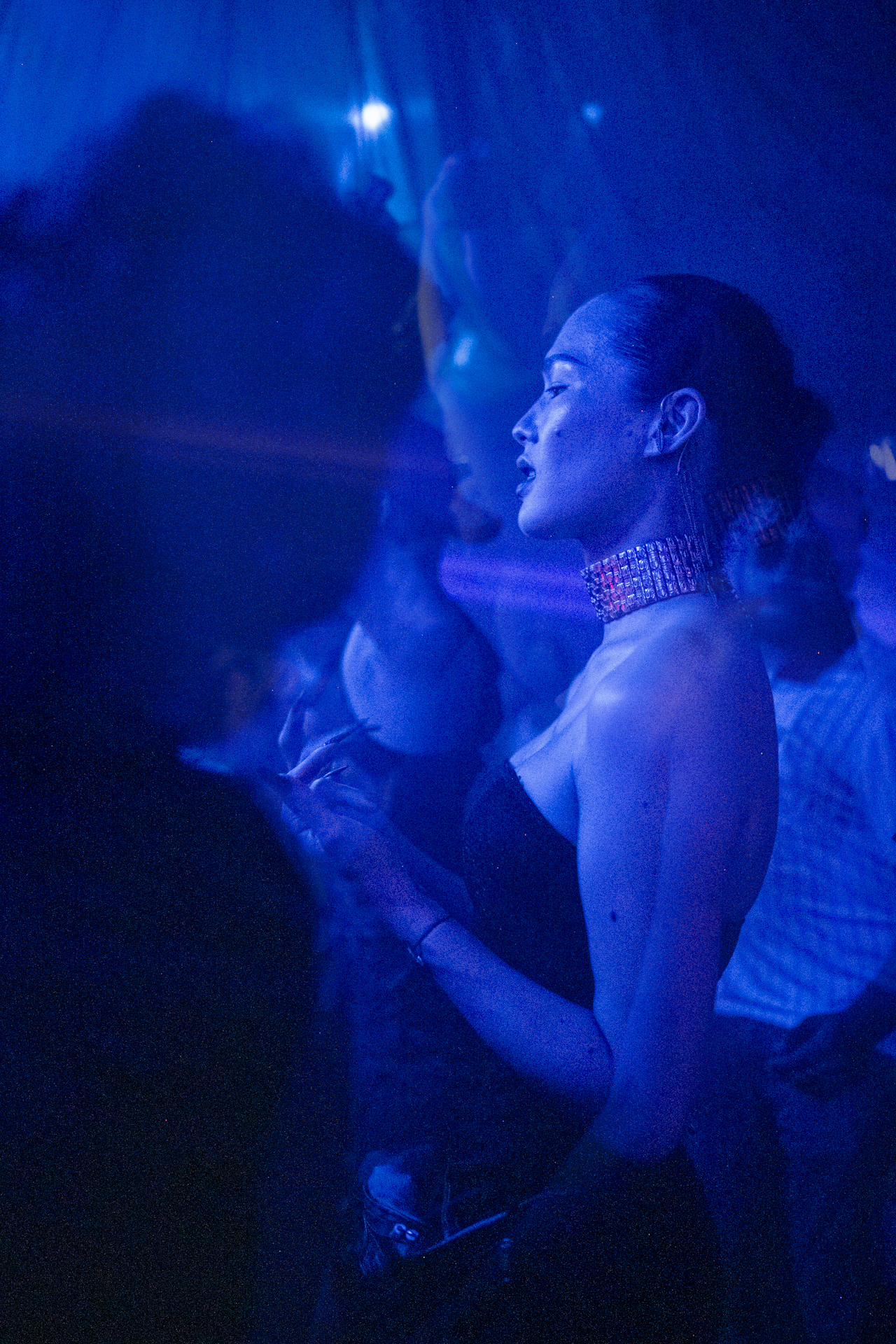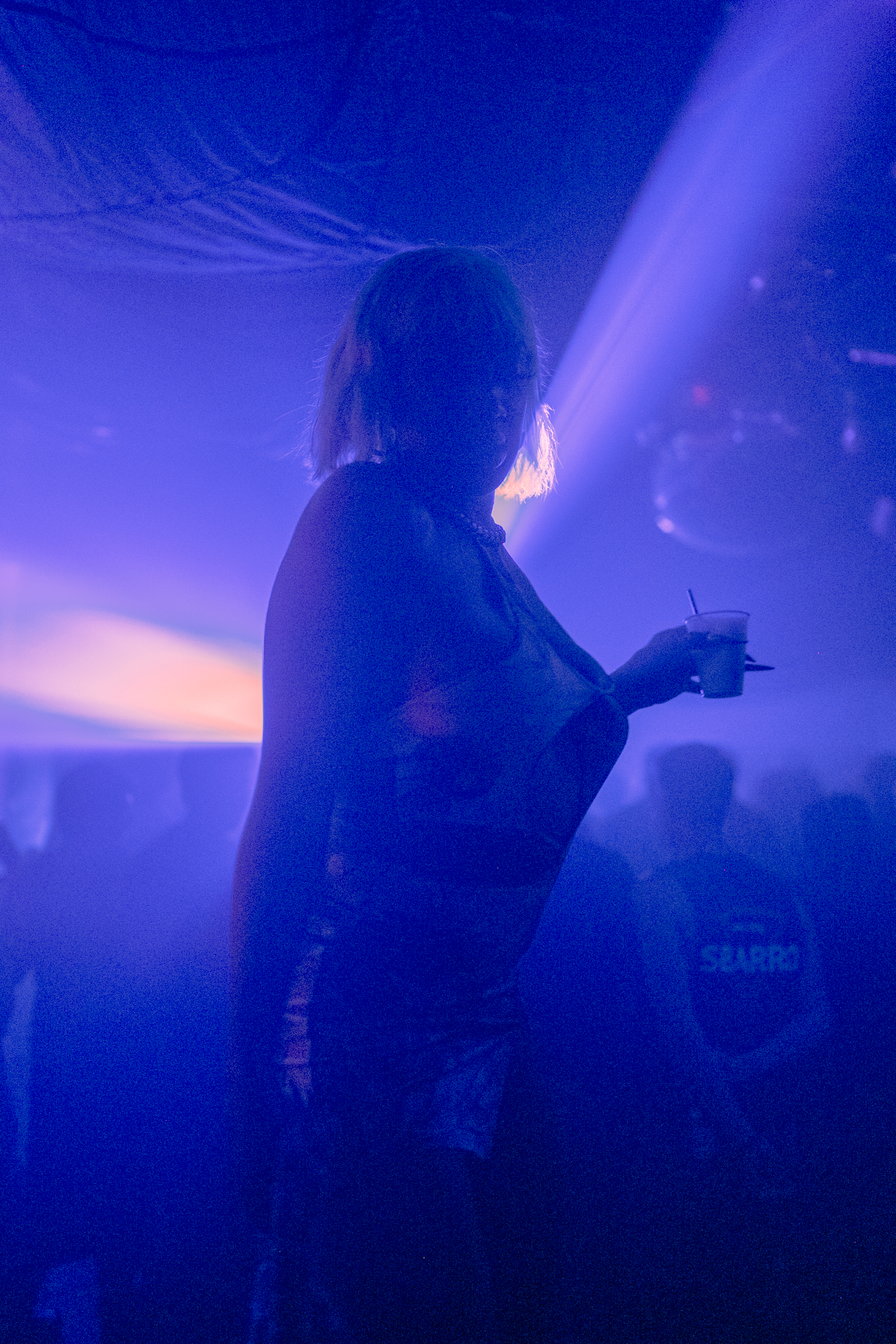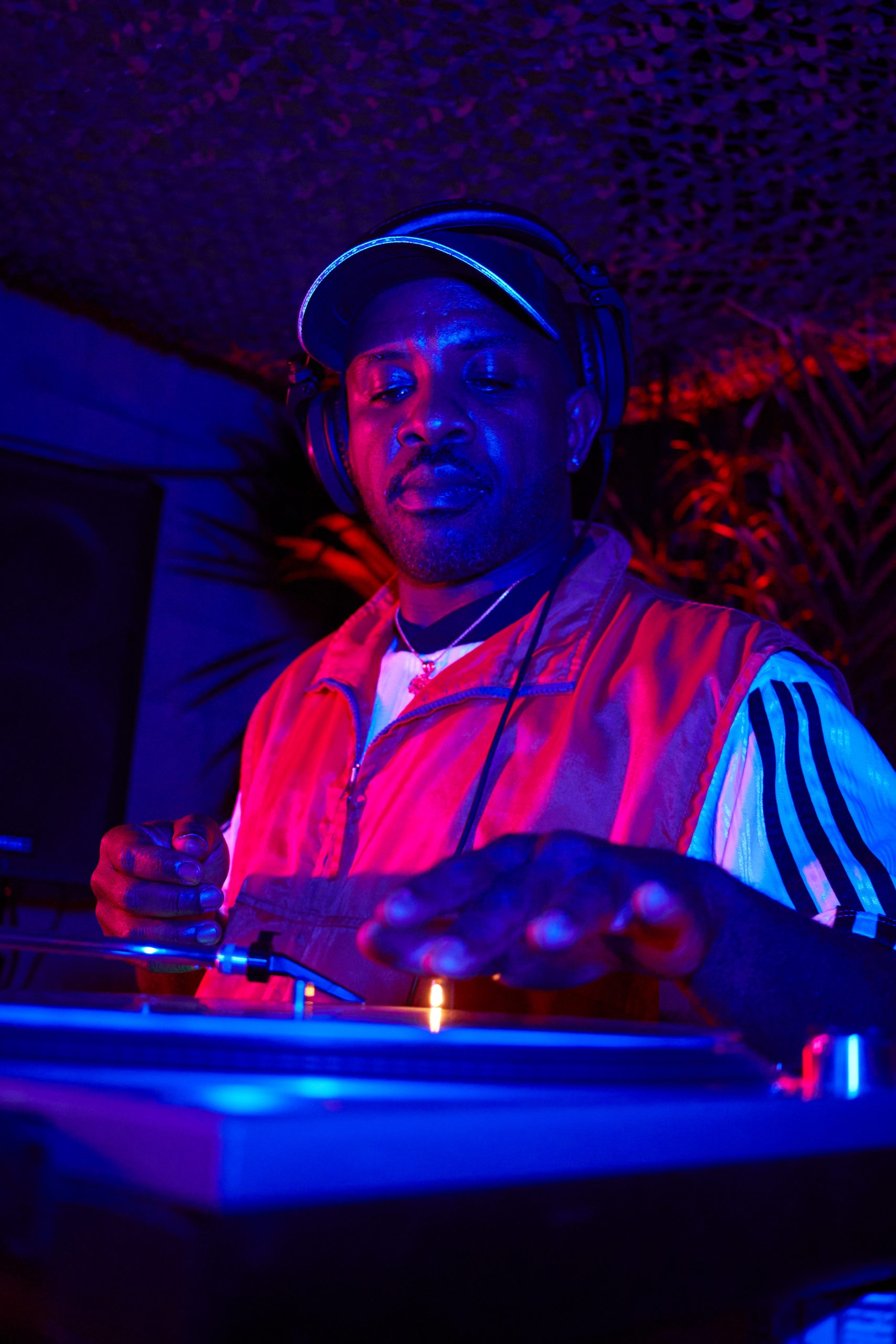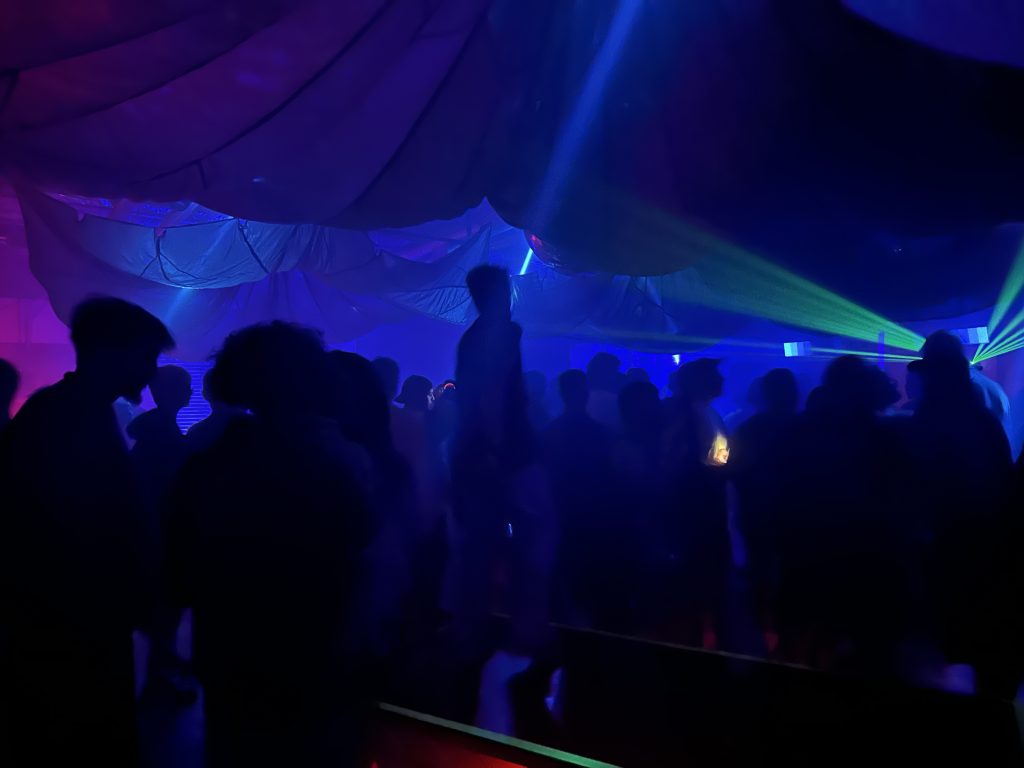
SIGNAL UNDERGROUND IS GIVING L.A. THE DANCE FLOOR IT DESERVES
On the queer warehouse party where house music’s past shapes the future
By MICHAEL PINCUS
A graffiti-engulfed warehouse sits at the end of an alley off the Santa Monica Freeway, some blocks away from the Los Angeles Convention Center.
It’s flanked by dumpsters, utility poles and a razor-wire fence.
No signage, no spillover crowd—just an unmarked door, two bouncers and the muffled thump of bass leaking through concrete walls.
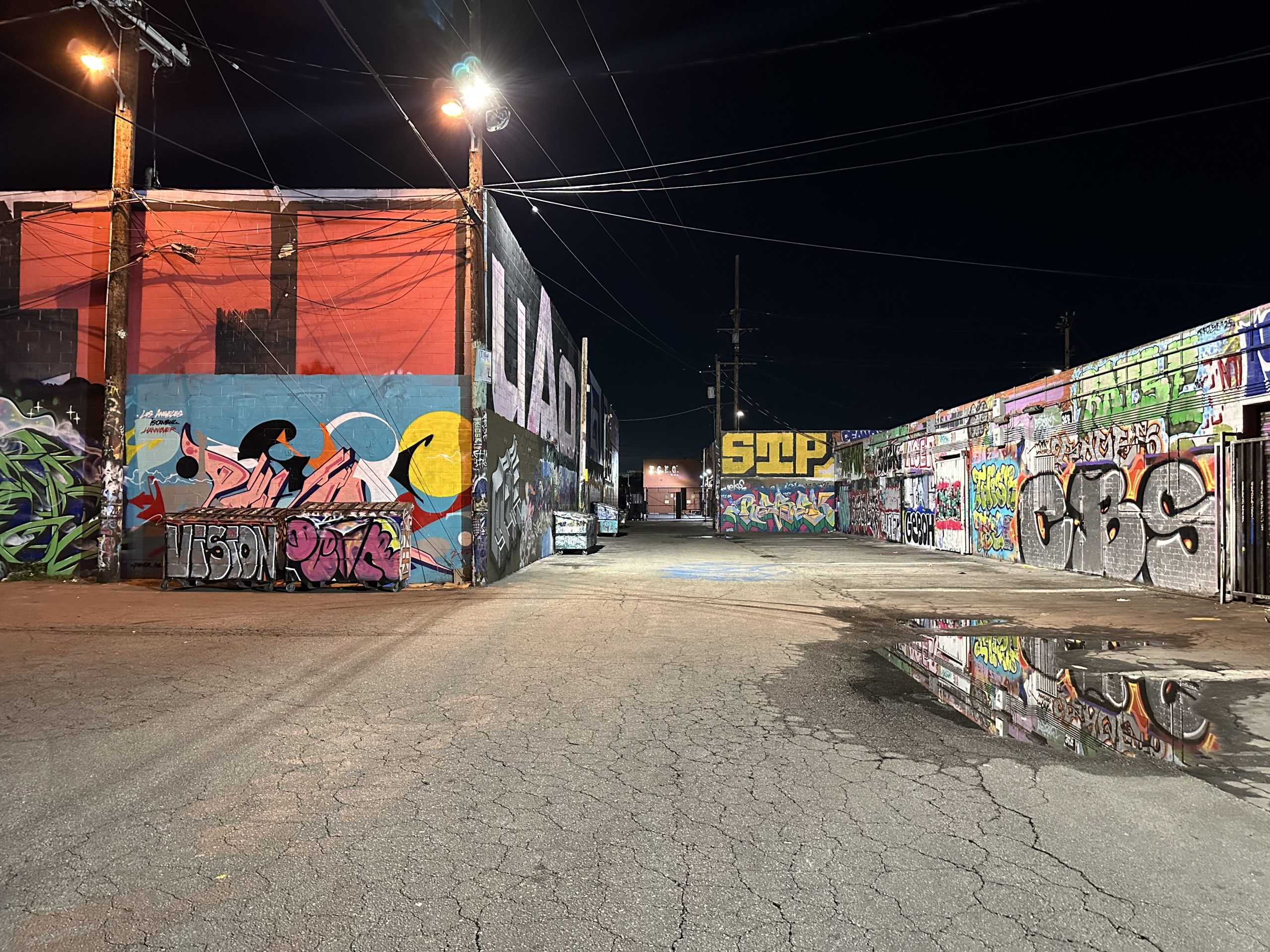
From the outside, Signal Underground looks like any downtown L.A. warehouse party: anonymous, grim, confrontational.
But inside, the temperature changes.
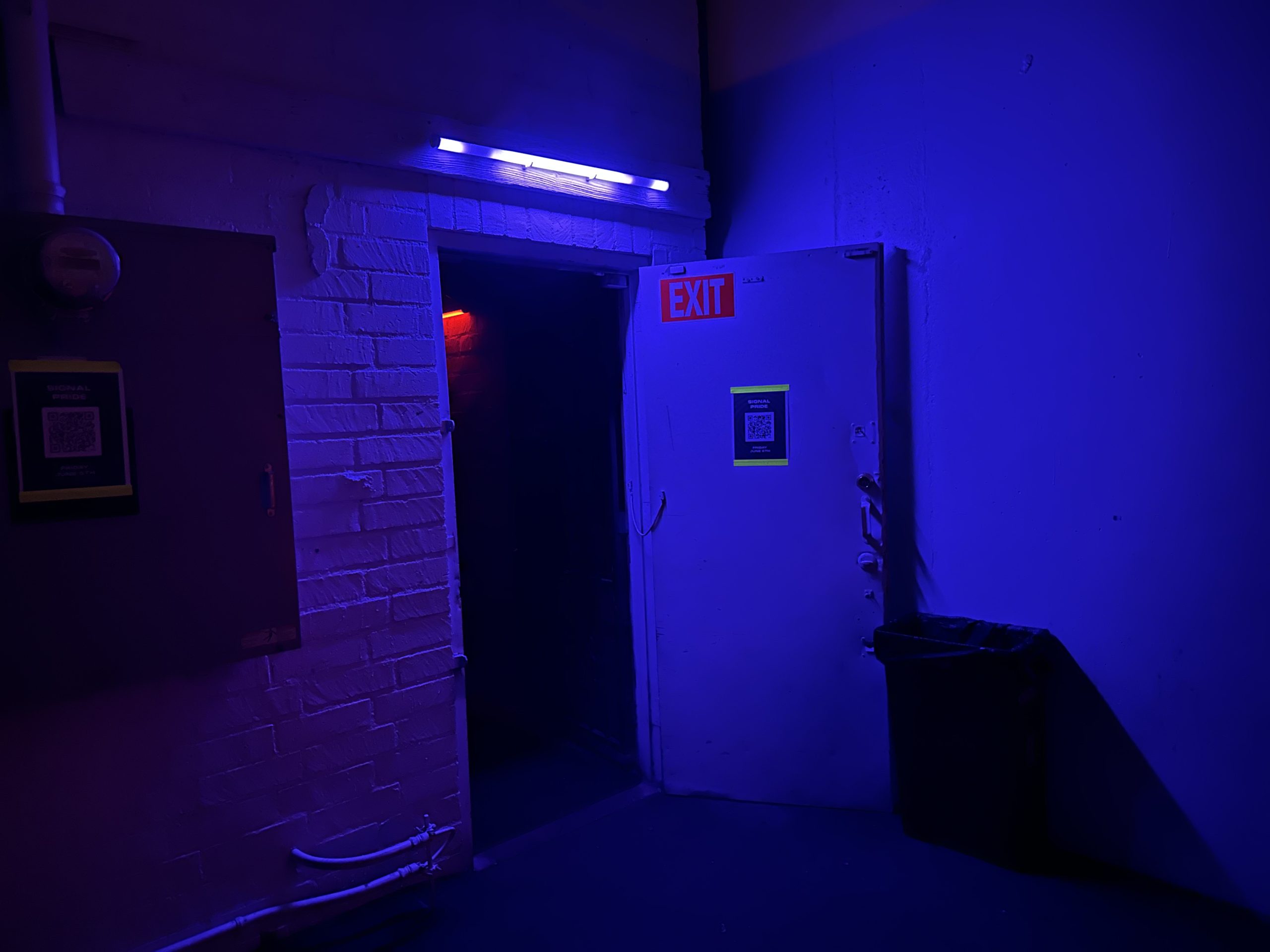
Giant parachutes billow from the ceiling like soft clouds or a drapey circus tent.
Their translucent fabric diffuses purple and red lasers into something gentle, almost surreal.

A disco ball spins over a crowded, phone-free dance floor, while soulful vocals ride groovy, uplifting rhythms.
Partygoers chat on cushioned couches as if they’re in someone’s living room.
In a district full of brutalist nightlife, Signal offers a warm pocket.
“I didn’t feel super comfortable or safe at a lot of parties that I was going out to in L.A.,” said Mez M., a co-founder of Signal and the party’s first resident DJ. “So when we first started Signal, the intention was very much so to create a space that felt inviting and warm.”
Since launching in November 2022, Signal has never aimed to be original or novel. Its production proudly pulls inspiration from raves in other cities, deliberately building on decades of underground dance music history.
“Dance music is very referential,” said Andrew O., another co-founder of Signal. “It’s pulling older beats and putting them into a new track. It’s taking some kind of drum machine loop from a track from the ‘80s and making it something new. It’s all building off of what’s been done before. We go into this party with that intention, not wanting to do the newest, flashiest thing, but building upon what people have been doing for decades past. I think that’s what helped set us apart.”
The parachutes suspended above the dance floor are one such reference. They nod to the womb-like, red-lit parachutes at No Way Back, an iconic Movement Electronic Music Festival afterparty in Detroit.
“They’re beautiful,” Andrew said. “They add a softness to what otherwise is just a concrete and brick warehouse. They add a lot of texture.”
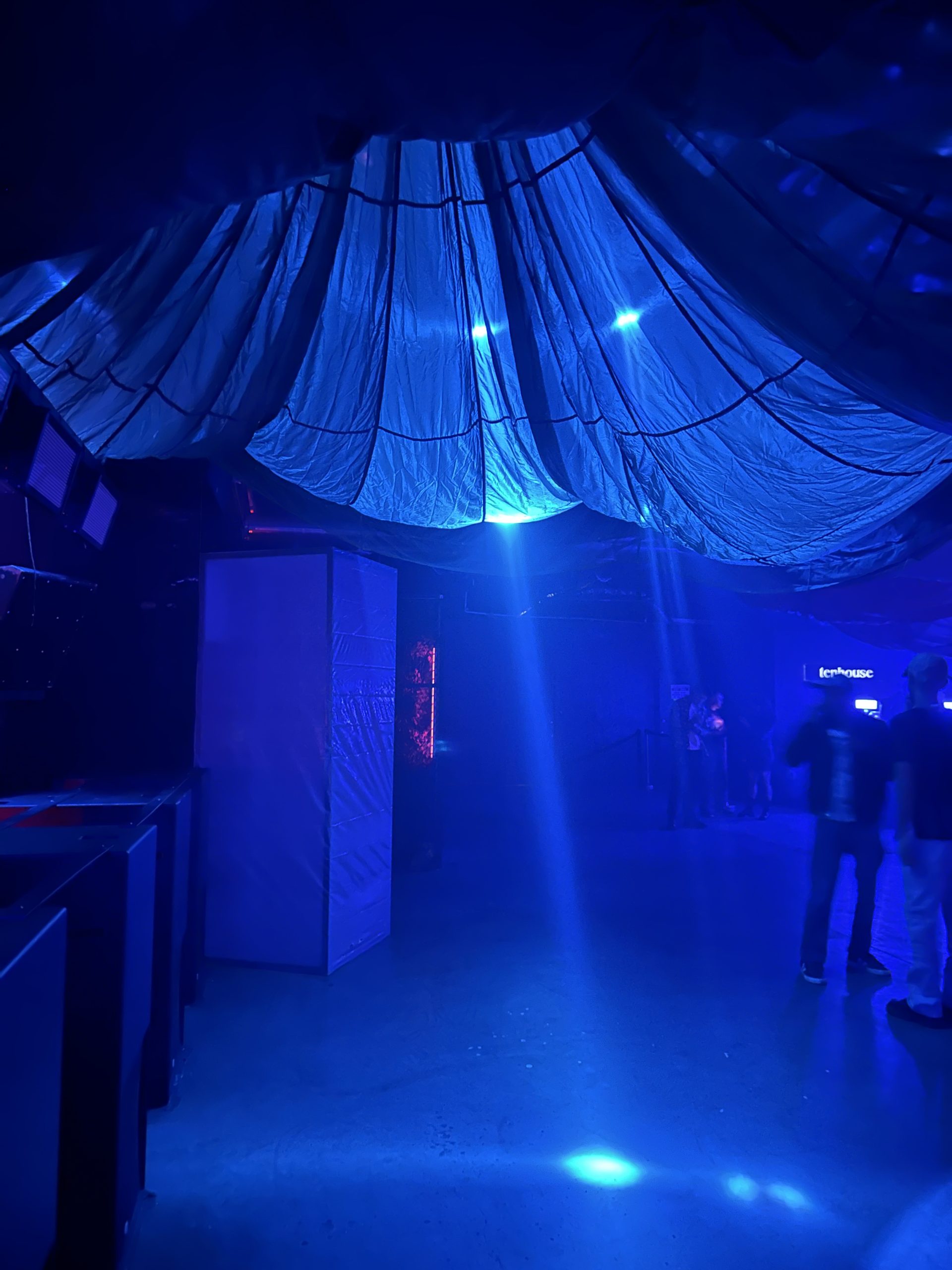
One of Signal’s more unexpected signature elements is its use of scent. Since Signal’s inception, perfumer David L.—Andrew’s boyfriend—has “scentscaped” each party with custom fragrances, introduced through diffusers near the entrance, coat check and dance floor.
“Smell is one of the best ways to orient yourself in an environment,” David said. “In the context of a rave, it helps set an intention and ground you to a space almost subconsciously. The experience of a specific and new smell allows you to touch feelings and thoughts and ideas and associate with the space in such a primal way that when you come back, you immediately get reinvoked into that mindset.”
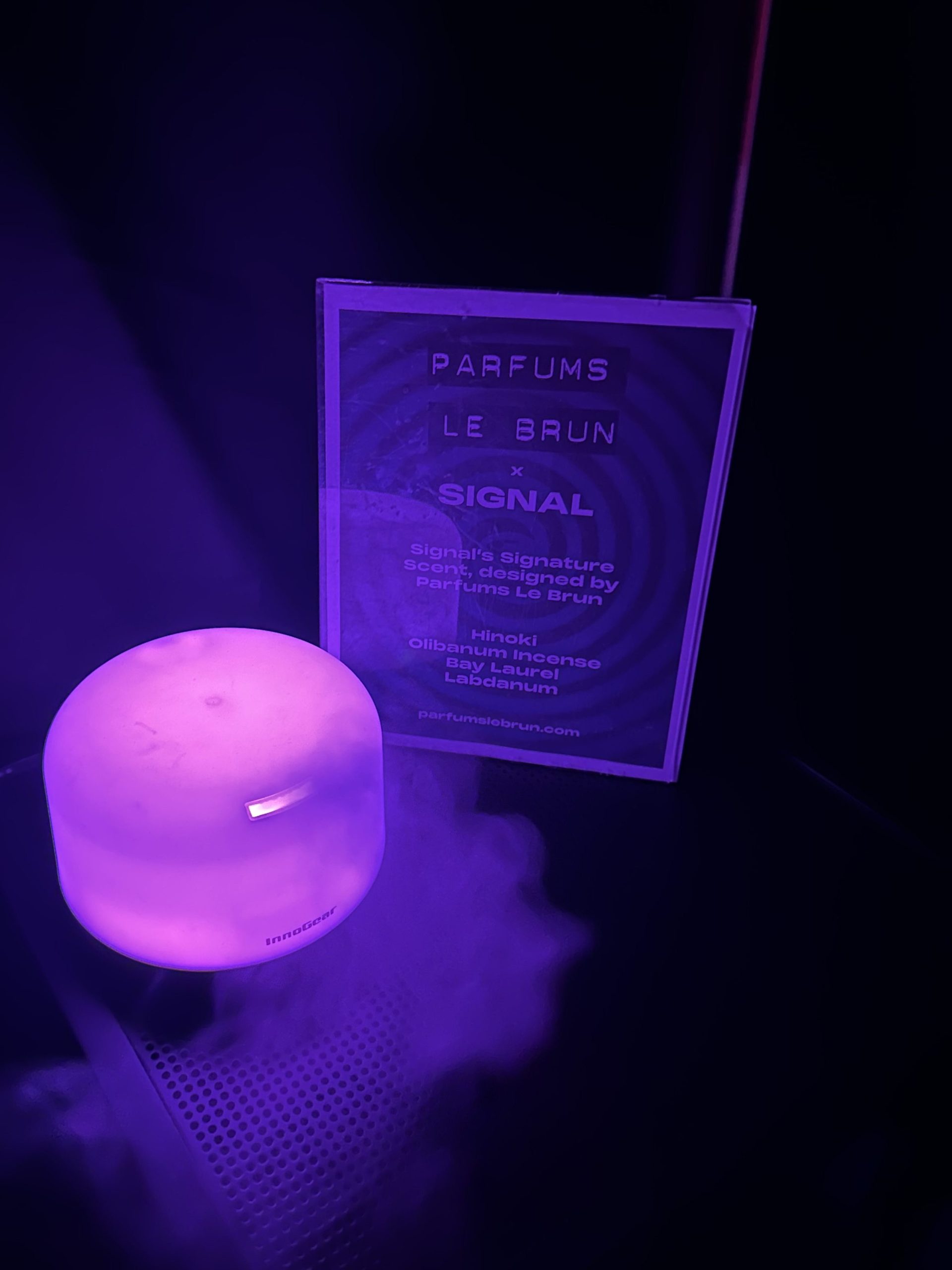
The Signal team draws inspiration from the DIY foundations of house and techno, genres born in underground spaces with little infrastructure and a lot of ingenuity. As commercial rave culture leans further into spectacle and profit, the team at Signal is committed to doing things the original way.
“This is a DIY space that we operate in,” Andrew said. “There are a lot of parties that are more ‘plug and play,’ that show up a few hours before and everything’s already set up—maybe the venue is running certain aspects of it—and they just go with it. Whereas we do a lot from scratch. There’s a lot that goes into the build.”
Signal’s entire design is handmade and constructed in another nearby warehouse. Lacking a permanent party venue, the team must set everything up before each party and then tear it all down immediately after. To Mez, this is an advantage.
“We can really step into a bit more of a fantasy and create something very ephemeral that is literally built up and torn down within 24 hours,” Mez said.
The Signal team designs and builds everything for the party in a nearby warehouse studio. Photographs by Michael Pincus
“We just want to set a higher standard in L.A.”
Mez’s vision for Signal traces back to his formative late teens attending some of New York City’s most legendary parties. He remembers dancing at Ladyfag events and catching Honey Dijon sets before she became a Grammy-winning name. Now, he wants his new home of L.A. to have a scene on the same level.
“We just want to set a higher standard in L.A.,” Mez said. “It’s the second-biggest city in the country, and there’s no reason that we can’t have an amazing nightlife space just like New York. We don’t have the same infrastructure, but in a lot of ways, having an underground space is really awesome because you just have so much more control over the experience in the space.”
Bringing that vision to life is Brandon L., Signal’s third co-founder and its head of production. With a background in party hosting and performing as a “drag-adjacent club kid character,” Brandon moved into spatial design and now leads the construction of Signal’s physical world.
“One of the things that felt really exciting about Signal was having the opportunity to grow with the project and have an event that’s able to evolve and expand upon itself,” Brandon said. “We’re very lucky that we have a large studio space that we can build in. That really has been a huge asset in being able to dream big and really let our imaginations run wild.”
Outside, a cozy patio offers heaters, cushioned seating and a staffed medical tent with free water and harm reduction resources. Flickering tea lights even illuminate the porta-potties. Inside, a small labyrinth structure behind the dance floor provides corners for people to have fun away from prying eyes. And during the final hour of the party, a bartender passes out sliced oranges to congratulate the ravers still on the floor.
“All of us feel very passionately about making sure that every single element of what we’re doing is intentional, thought out and done in a way that it is going to have an impact on our audience,” Brandon said.
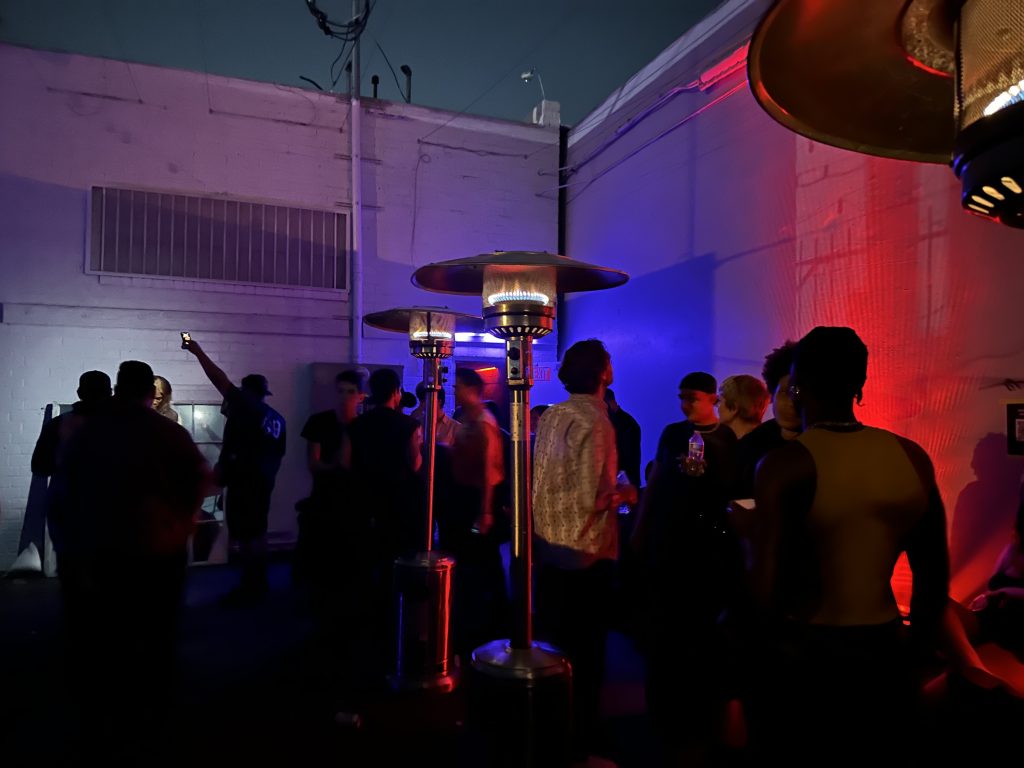
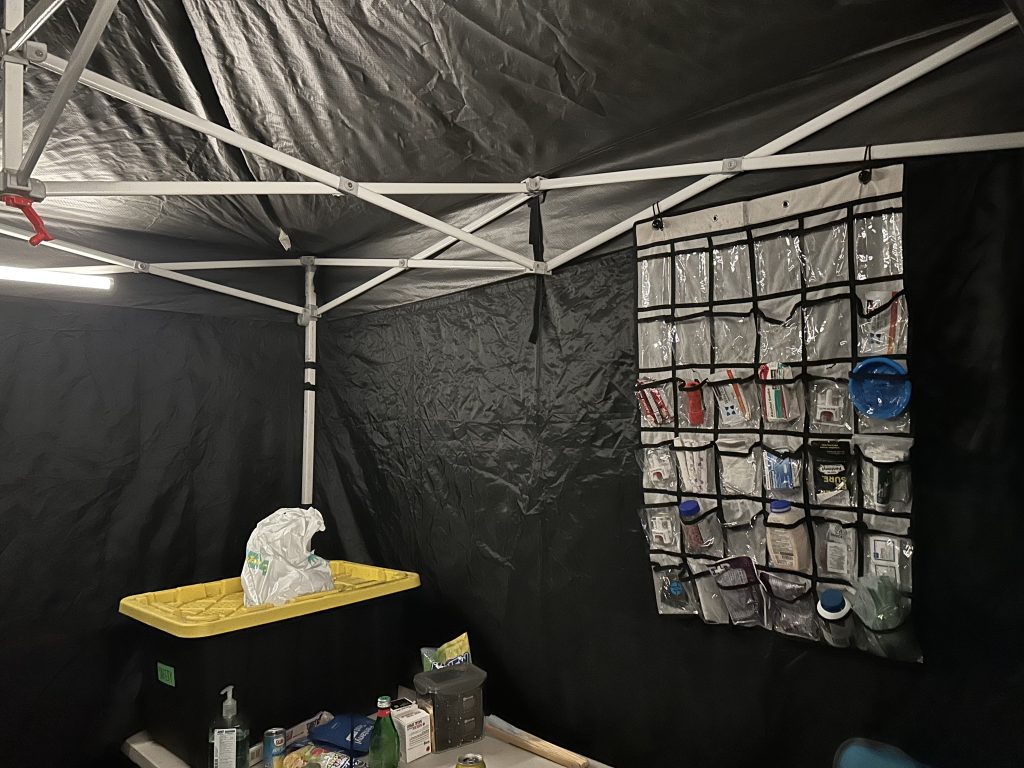
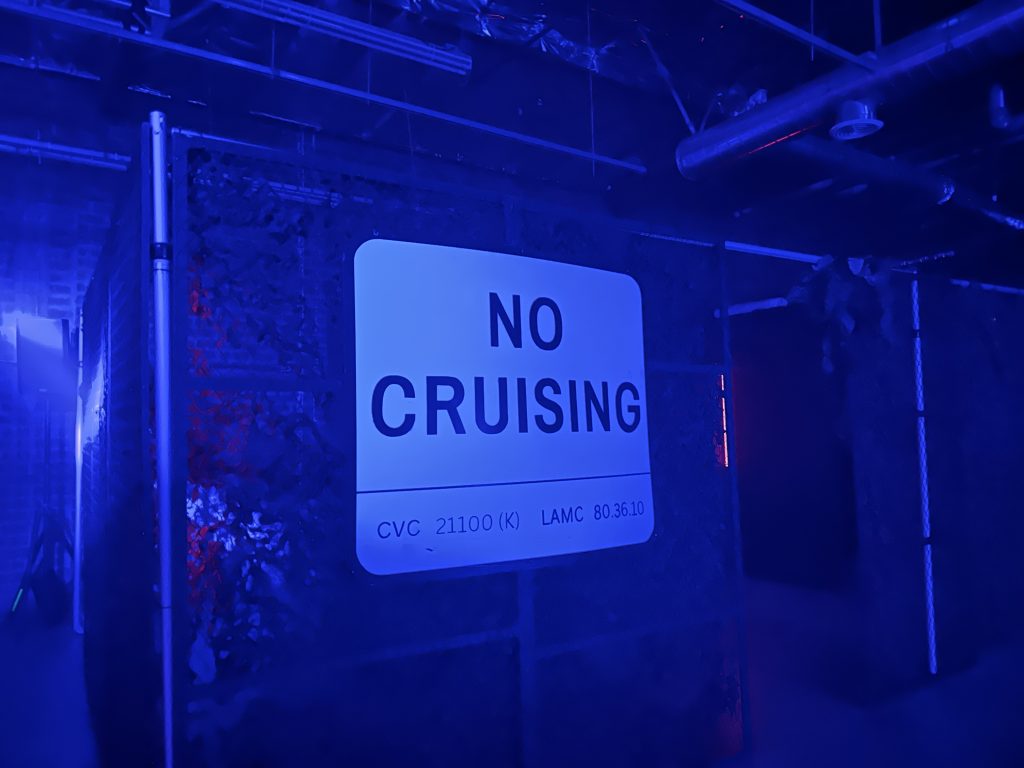
The same level of intention goes into Signal’s sound. The party’s sonic identity is rooted in house, not out of purism, but principle.
“For me, house music is less so about a four-on-the-floor soulful vocal, and more about the intentionality of house music, the lineage of house music, the offshoots of genres that have come from that and the community that surrounds that,” Mez said. “Signal’s ethos comes from the roots and origins of house music… that is what I want the basis of the party to be.”
Jacia M., a local DJ who performs under the name Sevyn, caught Mez’s attention with their sets that bridge dance music genres like diva house, acid and techno with old school house deep cuts. Sevyn was brought on this year as Signal’s second resident DJ.
“Every time I play Signal, I want people to walk in and not know if it’s 1995, 2005 or 2025,” Sevyn said. “So, it’s looking for those sounds that are very timeless. Signal feels very intentional. It’s not just a party thrown together that’s playing the soulful house that is popular at the moment. It’s really digging and finding that stuff that when people walk in, they’ve never heard this before, they’ve never had this before and they can’t Shazam it.”
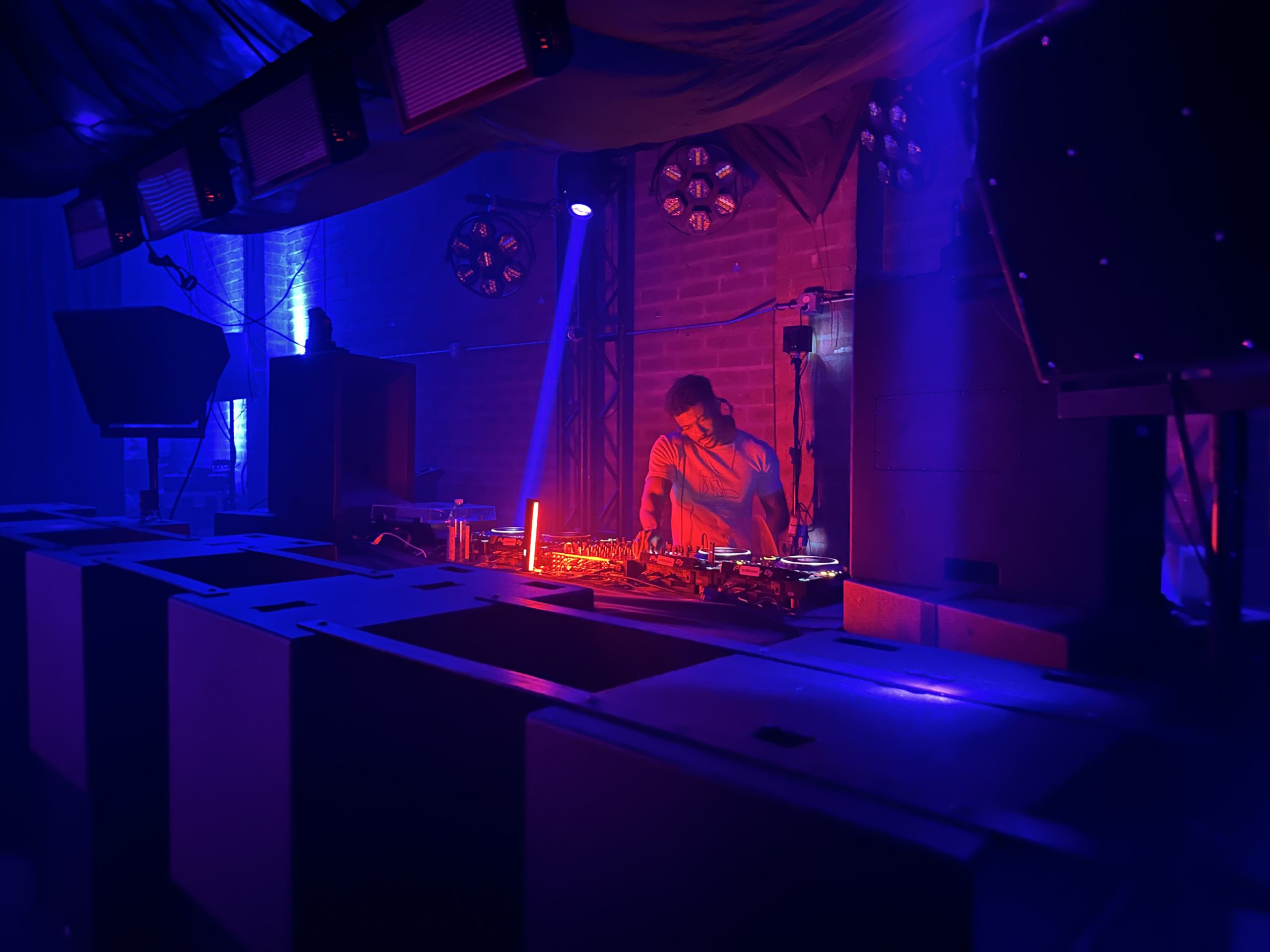
Signal isn’t just musically dialed-in. Its social atmosphere attracts a melting pot of the city’s various underground communities, including nightlife promoters, performers and creatives. The party welcomes everyone, but its culture is intentionally and unmistakably queer.
“It’s a music-first party—a queer-friendly, music-first party,” Mez said. “It’s queer as a mindset, of knowing how to show up in a queer space without making anyone else feel unsafe, or your energy feeling intrusive.”
The team is careful not to let the crowd become homogenous. Many parties in L.A. that label themselves as queer, they note, end up catering almost exclusively to cisgender gay men and often prioritize sex over music.
“You’re coming to Signal to dance,” Andrew said. “In L.A., a big cultural monolith that can take over a party are cis gay males seeking a sex-oriented space… After every party, our conversation turns to, ‘How did we feel about the crowd? How did we feel about the people who were there? Did we see ourselves in that group of people?’”
Mez feels inspired by some parties in Europe’s rave scene, where sex positivity and expression are encouraged across all identities, not just cis gay men.
“When I go out in Europe, say there’s a dark room, there are women in the dark room, there are femmes in the dark room, having just as much fun as the cis dudes,” Mez said. “So I think we’re kind of just trying to challenge that mindset of what a queer party is.”
Ultimately, the Signal team prioritizes quality music over anything else. Mez believes this is how they attract a more diverse crowd, representing all corners of the underground rave scene.
“We want Signal to be music-focused,” Mez said. “It is obviously a queer space. All the producers are queer. But, we don’t necessarily try to advertise Signal as a gay party or queer party. The audience that we aim towards is music lovers, and that definitely filters out a lot of riff-raff by us keeping our intentions in the music.”
“Acknowledging what inspires you doesn’t take away from what you’re creating.”
Andrew hopes partygoers will leave Signal feeling inspired to learn about the history of electronic dance music.
“A lot of queer people that are into dance music will go out into these spaces, and they’re enjoying dancing for hours and hours, but they don’t know the music very well,” Andrew said. “Why don’t you take a little bit of time to learn a little bit about the music? Because the resources are there. You can find the early progenitors, the early club spaces, the early DJs of this stuff, and talk to them, because a lot of them are alive.”
This reverence for history is the core of Signal’s mission.
“I think it’s really important that we, especially in creating queer spaces, don’t shy away from but prioritize acknowledging that we are here standing on the shoulders of the people who have come before us,” Brandon said. “Acknowledging what inspires you doesn’t take away from what you’re creating. It allows it to exist with the weight of the history that has helped bring it into the present.”
Highlights from Signal Underground’s official photo gallery. Photographs by Zach Stahl
The next edition of Signal Underground, on June 6, will celebrate LGBTQ+ Pride Month, with Mez, Mike Servito and Shaun J. Wright on the lineup. Then, on July 18, Signal will represent the L.A. underground on an international stage with a full takeover of the BEACH Stage at WHOLE Festival in Germany. Mez and Sevyn will close out Friday night with a six-hour set.
“We really do set an intention to bring people together to facilitate connections that maybe wouldn’t have been facilitated before,” Mez said. “We break down barriers through—as cheesy as it sounds—the power of music. We really do believe that music is a healing force. And it feels increasingly important to hold these spaces. I mean, this is my life’s work. This is how I contribute to society.”
Listen to the full audio piece:
▶️ Play Audio StoryListen to recordings of DJ sets from past Signal Underground parties:
Due to the underground and potentially illegal nature of the events described, interview subjects are identified by first name and last initial to protect their identities.
